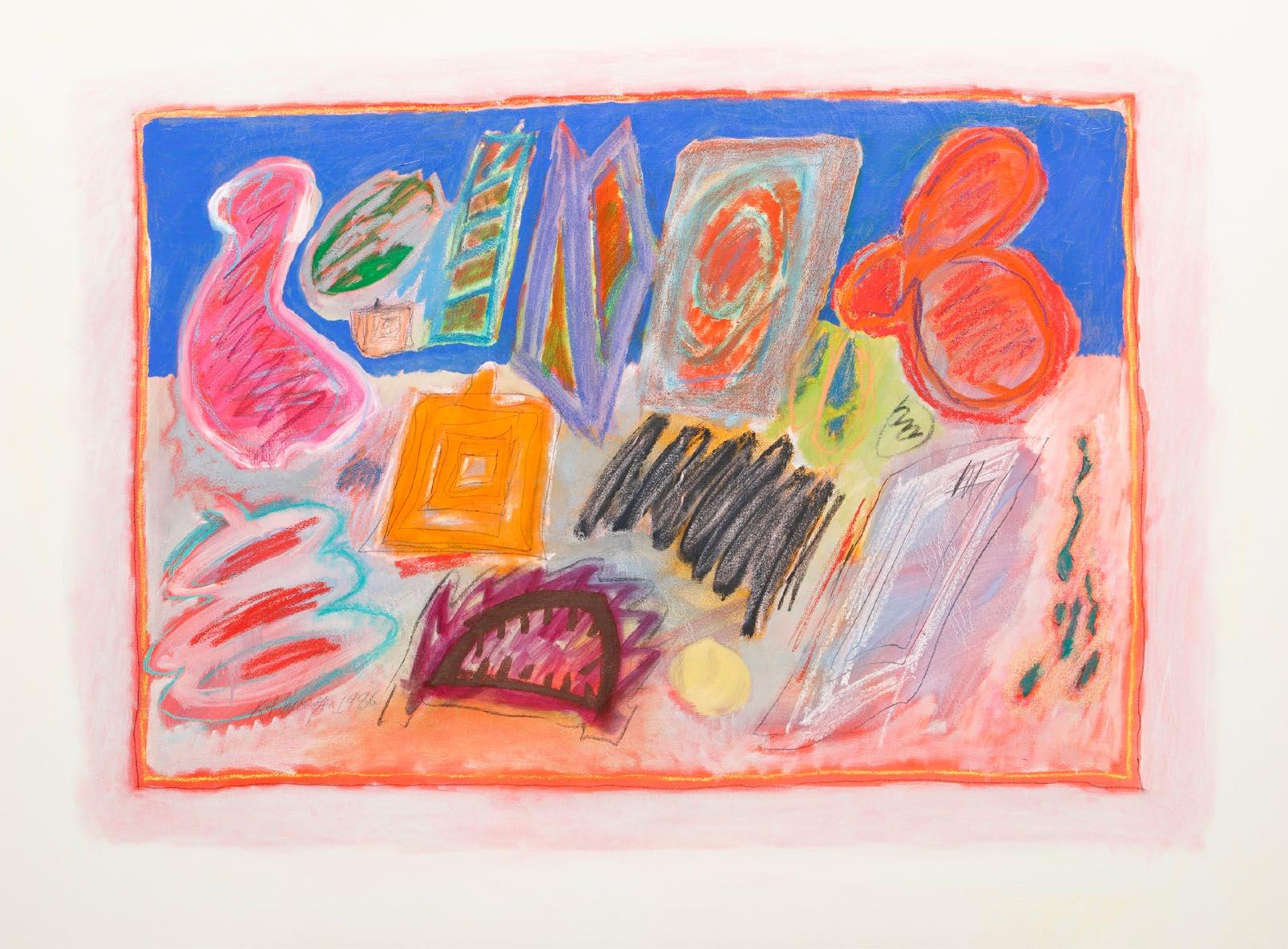























Celebrating work by women throughout art history, this inaugural annual auction presents a curated selection of lots with unique perspectives from both well-established names and gifted emerging creators. The upward trend for women artists can be seen across all levels of the art market, with increasing enthusiasm for contemporary artists and renewed interest in artists from the past. In keeping with a growing focus on this category of collecting, this auction pays homage to the female voice while encouraging new dialogue and scholarship on how women influence art historical conversation.
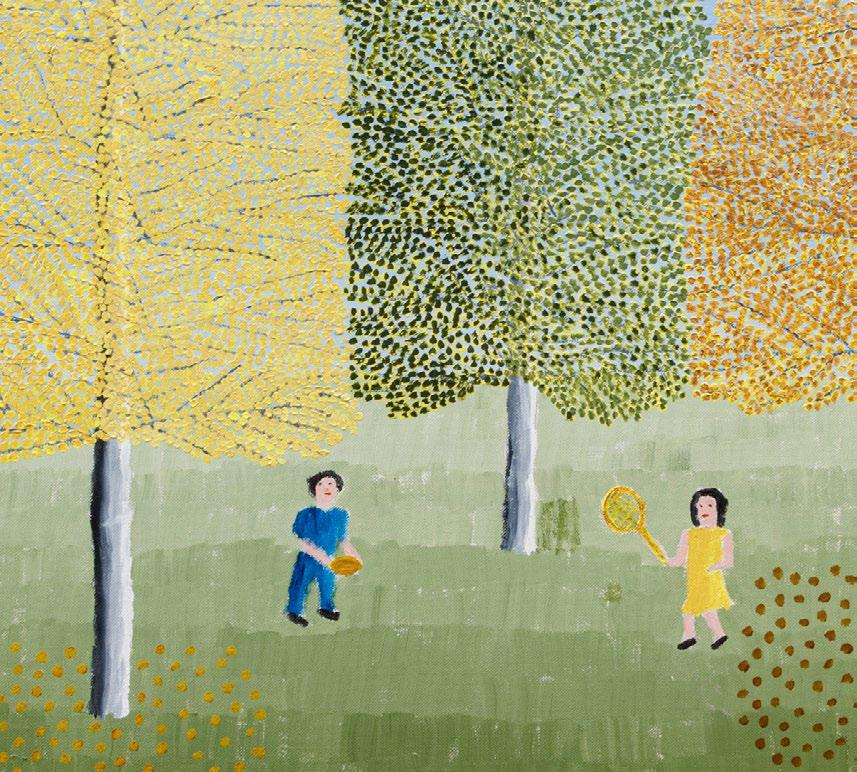
All lots will be available for preview in our New Orleans Magazine Street gallery beginning Monday, March 27.
Through Her Eyes: Women in Art Auction begins at 1:00 PM CST on March 30, 2023 on all three bidding platforms.
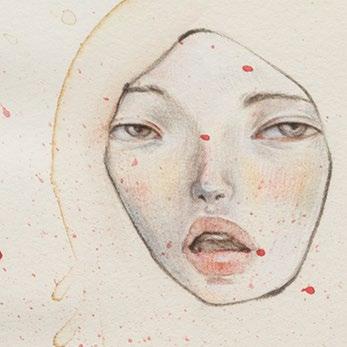
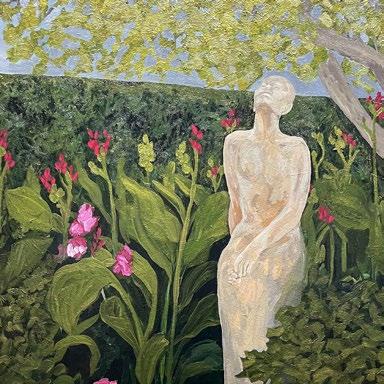

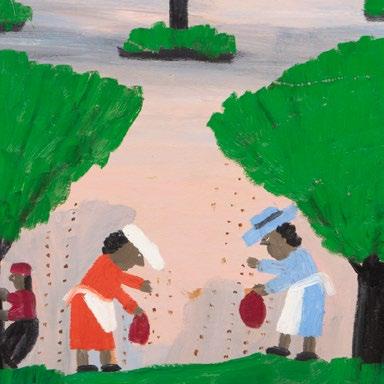
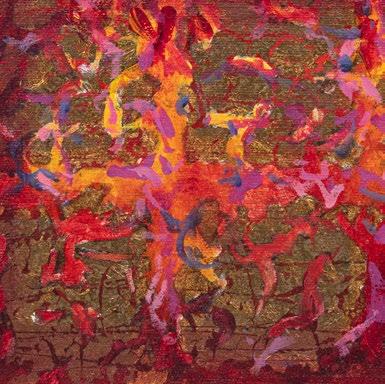 Judith H. Bonner, former Senior Curator and Curator of Art, The Historic New Orleans Collection
Judith H. Bonner, former Senior Curator and Curator of Art, The Historic New Orleans Collection
he emergence of women artists into the mainstream has been a protracted and arduous ascendancy from coast to coast. The rich variety of women’s art in this auction was not always as available as it is now. As a general rule, artistic success has roots in formal art studies and close observation of artworks in museums and other art institutions. The National Academy of Design, founded in New York in 1825, was the singular reputable organization in this country until a number of its students, many of whom were women, rebelled and formed the Art Students League in 1875.
The founding of American museums began slowly but blossomed in the late eighteenth century. The Charleston Museum, founded in 1773, focuses on the nation’s history. Artist Charles Willson Peale (1741-1827) left a lasting legacy to the country through his organization of two museums and two art academies, including the Pennsylvania Academy of the Fine Arts. Inspired by the Enlightenment, in 1782 he opened a portrait gallery of American Revolutionary heroes and in 1786 he opened the Peale Museum of natural history and technological objects in Philadelphia.
The year 1876 was a banner year for the establishment of three museums. The Pennsylvania Museum and School of Industrial Art was chartered as a museum and teaching institution. The Boston Museum of Arts opened at Copley Square. The Philadelphia Museum of Art was chartered for the Centennial Exhibition in celebration of the 100th anniversary of the Declaration of Independence. These institutions became important to young women across the country, including Louisiana, as they built a foundation for an art career.
More than a century after the founding of these museums and academies, the National Museum of Women in the Arts (NMWA) opened its doors in our nation’s capital in 1996. Established to expand visitors’ understanding of global history “to include the creative legacy of women artists,” NMWA sets a high standard for excellence in artworks from the Renaissance to the present.
In the early nineteenth-century women artists often subjugated their identities in paintings or worked in collaboration with male family members. Watercolor painting was long accepted as a suitable endeavor for women, many of whom produced skillfully executed compositions. Responding to the luminescent effect of J.M.W. Turner’s (1775-1851) landscapes, the highly
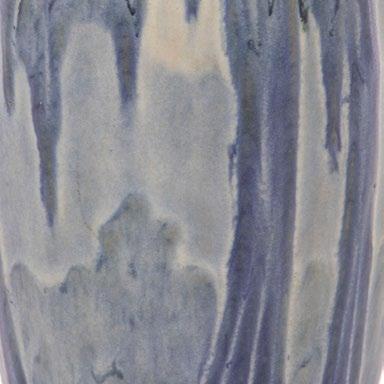
influential aesthetician John Ruskin (1819-1900) advocated the watercolor medium for its transparency, freedom of application, and proficiency in capturing ephemeral effects of light and moisture. Like its European counterpart, the American watercolor movement elevated watercolor to a higher art, and thus the art of many women.
In Louisiana, as in other parts of the nation, at a time when there were few opportunities to study art, women sometimes trained under their husbands’ tutelage or in private homes, usually with a female teacher. Opportunities finally opened in 1886 with the establishment of the Artists’ Association of New Orleans (AANO), where women studied art and exhibited their work alongside men. Two women who studied at the AANO made a moderate success of their membership, while a third, Marie Madeleine Seebold [Molinary] (1866-1948) served as an instructor.

Simultaneous with the founding of the Artists’ Association, the H. Sophie Newcomb Memorial College for Women was established, offering young women the opportunity to study art within a structured academic program. Newcomb’s School of Art provided greater opportunities to a sizable number of women. Inspired by the Arts and Crafts Movement in Victorian era Britain, promoted by Ruskin, and the founding of museums and art academies along the Eastern Seaboard, the Massachusetts-born brothers, William Woodward (18591939) and Ellsworth Woodward (1861-1939) established the Newcomb Pottery Enterprise in 1895. The tenets of the Arts and Crafts Movement were the use of well-crafted natural materials and simple designs inspired by nature reflecting the shape of the object. Under the resolute leadership of Mary Given Sheerer (1865-1964), the pottery enterprise developed an international reputation and provided numerous women with aesthetic satisfaction and a source of income.
Subsequently, with the establishment of the Arts and Crafts Club and its New Orleans School of Art in 1922, women studied and exhibited alongside male artists who were the luminaries of their day. The Club’s guiding principles paralleled the Arts and Crafts movement and introduced its students and the city to national and international trends in the fine and decorative arts.
Alberta Kinsey (1875-1952) served as an impetus for the establishment of the Club and its school, with the force of women of the local citizenry supporting the organization socially and financially. Kinsey taught children’s classes for a year before devoting herself to her painting career. Her artistic style, which evolved from representational art to non-objective art over the Club’s thirty-year existence, symbolizes the flowering of the arts for female and male artists. Other women artists who served as instructors at the Club include Caroline Durieux (1896-1989) and Angela Gregory (1903-1990).
In 1956 a small group of artists founded the Orleans Gallery, the city’s first cooperative art gallery. A non-profit, communityoriented gallery located in the French Quarter, its dual objective was for the exhibition and promotion of contemporary art in the city and to awaken the country to New Orleans as a thriving art and cultural center. Women shared equal status with men, and the gallery served as a forum for discussion and an exchange of ideas. Permanent artist-members included Shearly Grode (1925-2003), Lin Emery (1926-2021), Ida Kohlmeyer (1912-1997), and Mildred Wohl (1906-1977). Additionally, the gallery exhibited the works of students, guest artists, and artists of national and international renown like Pablo Picasso (1881-1973). The Orleans Gallery closed in 1972, but during its fourteen-year run it achieved many of its goals. It gave rise to a number of commercial art galleries opening in the city, with many of them owned and operated by women.
Throughout the past 130 years, women artists in Louisiana have faced innumerable challenges, but those having an association with Newcomb College, the Arts and Crafts Club, or the Orleans Gallery have enjoyed success in their art careers. Most have benefitted from intensive artistic training, especially at the Pennsylvania Academy of the Fine Arts or the Art Students League. Conversely self-trained artists like Clementine Hunter (1887-1988) and Mississippi artist Theora Hamblett (1895-1977) painted successfully throughout their careers. Although Ashley Longshore’s (b.1975) bachelor’s degree is in literature, her pop culture paintings underscore her studies outside the classroom. This auction celebrates both the heritage and the promise of art by women.
Note: Marguerite Pearson was born in Philadelphia, Pennsylvania in 1898 and raised in Somerville, Massachusetts. After a serious bout with polio at the age of sixteen, Pearson lost her ability to walk and used a wheelchair for the rest of her life. Throughout the 1920s, Pearson studied under notable Massachusetts artists Edmund C. Tarbell and Aldro Hibbard among others, while also enrolled in classes at the School of the Museum of Fine Arts, Boston. She joined the Guild of Boston Artists in 1930, showing her work regularly through this organization throughout the following decades. She received much admiration for her work that remained rooted in realism and everyday life during a time of the art world pushing abstraction to its limits. Contemporary reviewers of her work note her illustrations of “perceptive tenderness” and “compelling calm.” During the 1940s, she custom-built a wheelchair accessible home studio in Rockport where she painted and taught private lessons until her death in 1978. During Pearson’s life she enjoyed a level of local acclaim, however since her death in 1978, others further afield have continued to discover the delightful simplicity of her work.

Ref.: “Marguerite Pearson Information and Inventory.” McDougall Fine Art Galleries. www.mcdougallfinearts.com. Accessed Mar. 6, 2023.
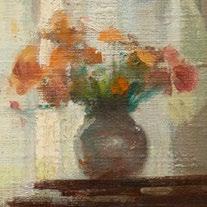
Note: Born in Birmingham, Alabama, Ella Miriam Wood attended Newcomb Art School in New Orleans under the tutelage of Ellsworth and William Woodward from 1905 to 1908 where she was awarded the Fannie Estelle Holley Memorial Medal for proficiency in watercolor painting. She was a post-graduate student at Newcomb from 1910 to 1911 and listed as an instructor in watercolor for the 1912/13 school year. She later studied with William Merritt Chase in New York and attended the Pennsylvania Academy of the Fine Arts before returning to New Orleans. Wood excelled in both oil and watercolor, and she also taught private lessons. A member of the New Orleans Arts and Crafts Club, she exhibited there over three decades and also was included in group exhibitions at the Delgado Museum of Art in 1935 and 1940. She was an active part of the New Orleans art community in the first half of the twentieth century, creating commissioned portraits, landscapes, scenes of local life and occasionally working with Mardi Gras krewes.
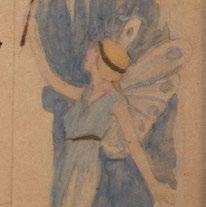
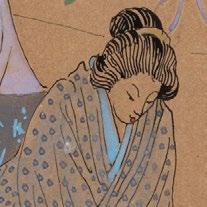
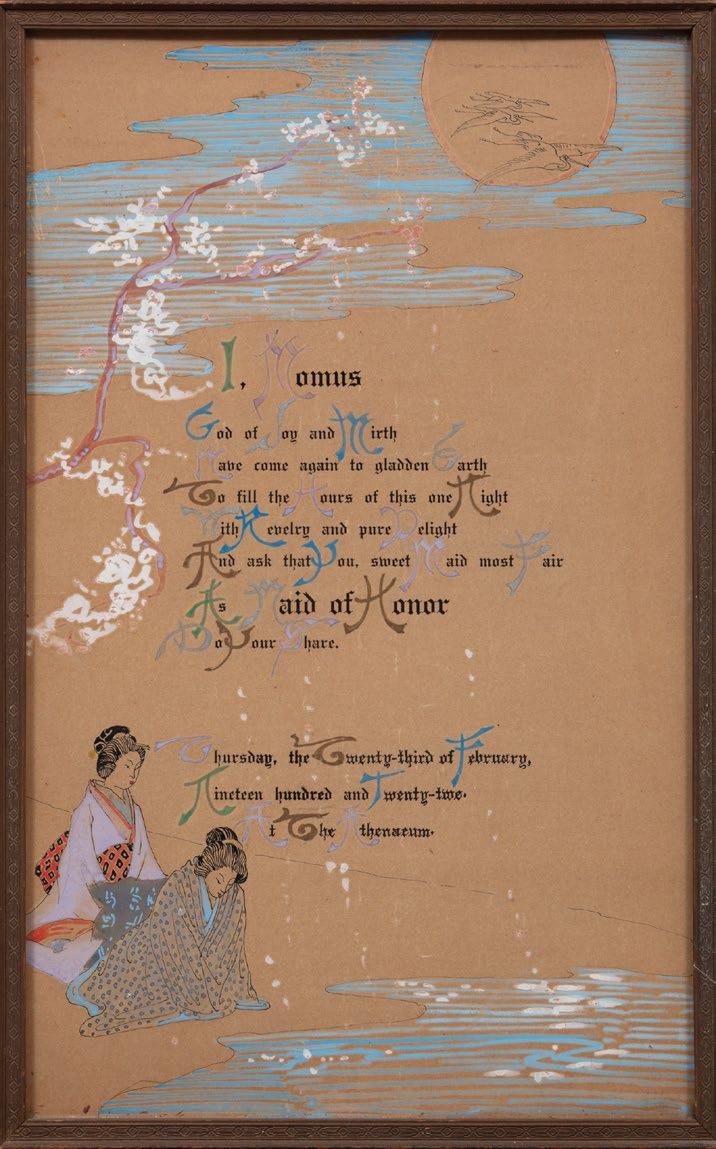
Ref.: Ormond, Suzanne. Louisiana’s Art Nouveau: The Crafts of the Newcomb Style. Gretna, LA: Pelican Publishing, 1976.
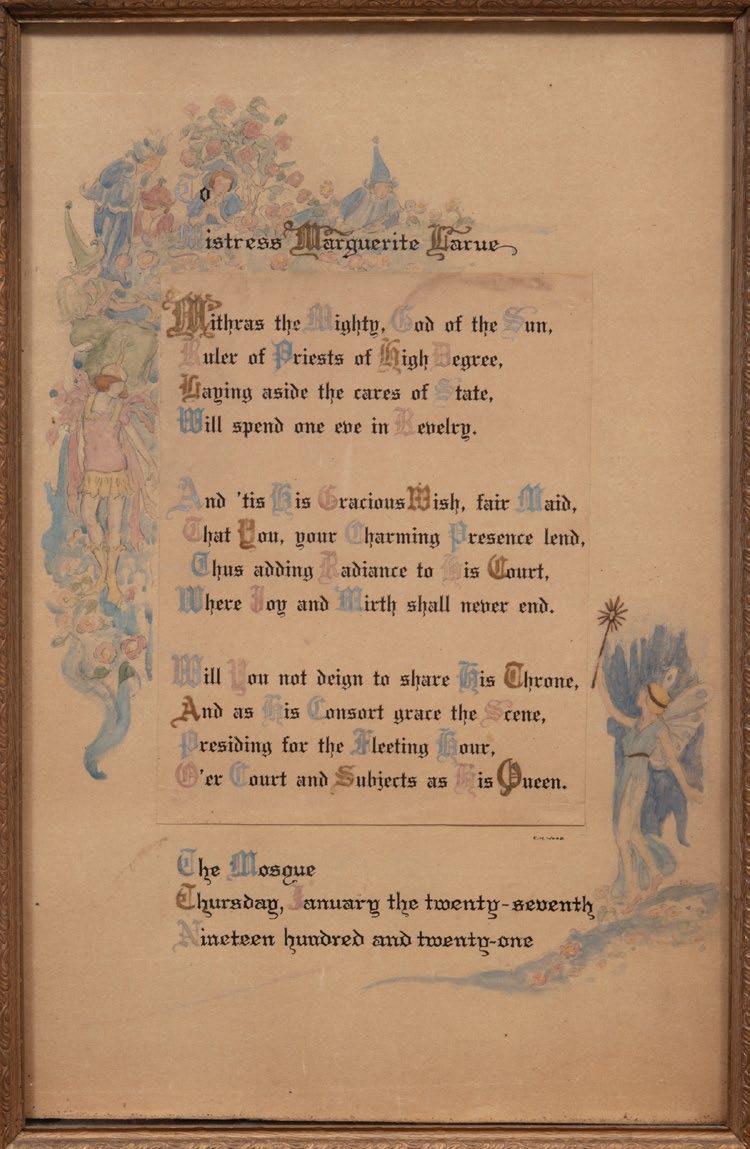
[$1200/1500]
Provenance: Neal Auction, Nov. 20, 2010, lot 366.
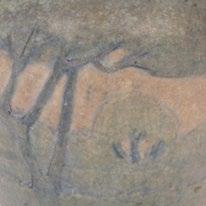
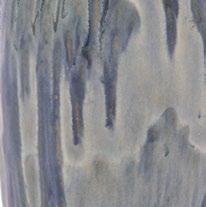
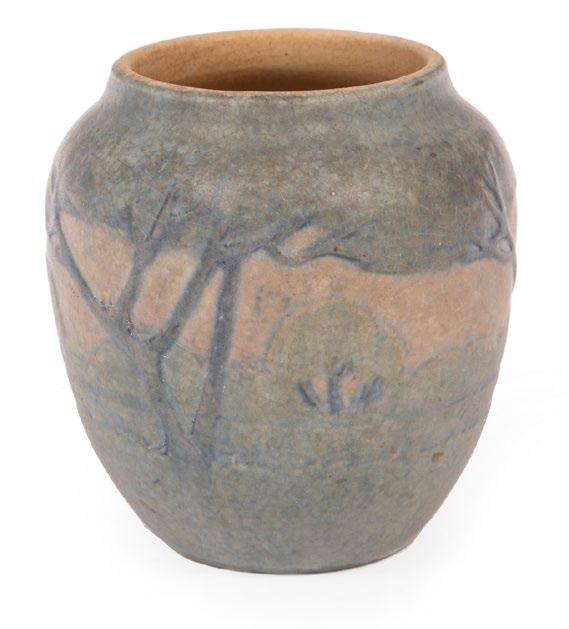

4 in., dia. 3 5/8 in. [$1000/1500]
Provenance: The Dominican Sisters of Peace, Historic Veritas House, New Orleans, LA; Neal Auction, Apr. 21, 2012, lot 510.
Note: H. Sophie Newcomb Memorial College (Newcomb College) of New Orleans was one of the earliest educational institutions to be associated with the Arts and Crafts Movement. It shared many of the movement’s goals, such as creating opportunities for women in the arts. Newcomb Pottery, founded in 1895, was the brainchild of Ellsworth Woodworth, who taught drawing and painting at Newcomb College, and his brother William, an artist and professor at Tulane University who was especially interested in developing a pottery program at the college. The quasi-commercial venture offered Southern women the ability to support themselves financially during and after their artistic training. The Woodward brothers hired Mary Given Sheerer, who had studied at both the Cincinnati Art Academy and the Art Students League of New York, as Instructor of China Decoration and Design, and she was an important influence on the direction of the pottery.
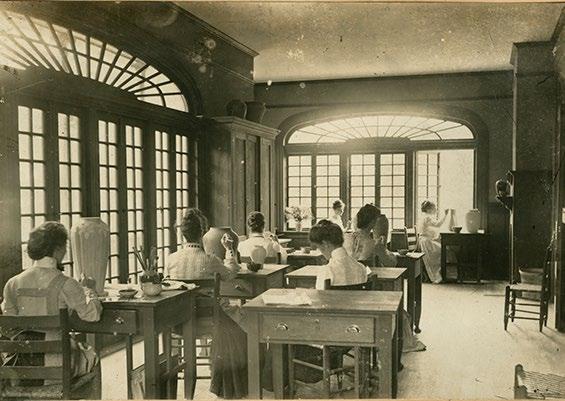
Newcomb Pottery soon evolved a cohesive style. Although some of the early work occasionally utilized other colors, a combination of blues and gray became the pottery’s distinctive hallmark. The subject matter was determined from the start by Woodward and Sheerer. Sheerer famously declared: “the whole thing was to be a southern product, made of southern clays, by southern artists, decorated with southern subjects!” Conventionalized designs inspired by the flora and fauna of the South, often highly abstracted and almost always composed in repeating patterns, dominated Newcomb Pottery’s output. Ultimately, Newcomb College’s ceramic program was among the most successful art potteries, and it enjoyed an almost fiftyyear run. The resulting body of work is considered one of the most significant collections of American art pottery of the twentieth century, and the pieces each offer insight into the extraordinary women who created them.
Ref.: Main, Sally, Adrienne Spinozzi, et al. The Arts and Crafts of Newcomb Pottery. New York: Skira Rizzoli, 2013.
6. Marie de Hoa LeBlanc (American/Louisiana, 1874-1954, active Newcomb College, 1895-1914), “The Schooners”, graphite and watercolor on paper, signed, titled and inscribed en verso, 2 labels with artist, one with title, on backing paper, 10 5/8 in. x 9 7/8 in., framed, overall 14 7/8 in. x 12 7/8 in. x 1 1/4 in. [$800/1200]

7. Emilie de Hoa LeBlanc (American/Louisiana, 1870-1941, active Newcomb College, 1897-1921), “On the Bayou”, graphite and watercolor on paper, initialed “E” lower left, partial sketch en verso, handwritten label with title on backing paper, 10 5/8 in. x 7 3/8 in., framed, overall 14 7/8 in. x 12 7/8 in. x 1 1/4 in. [$800/1200]
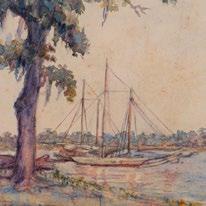
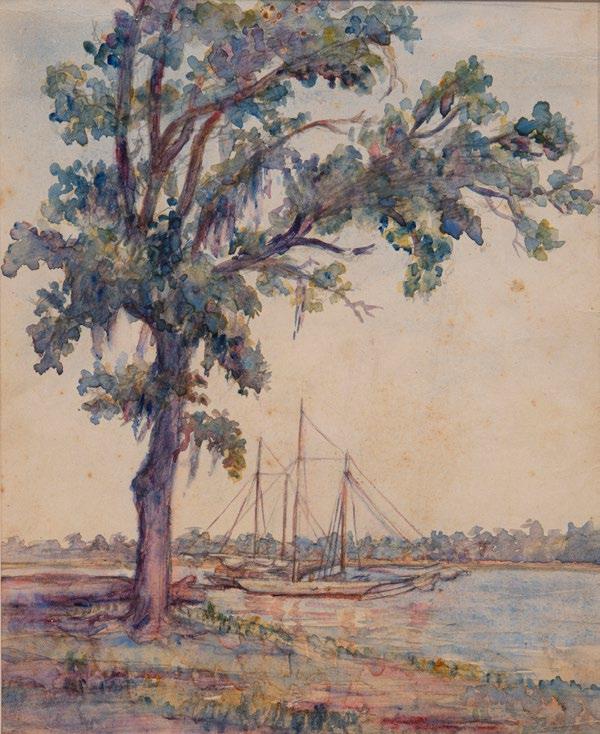
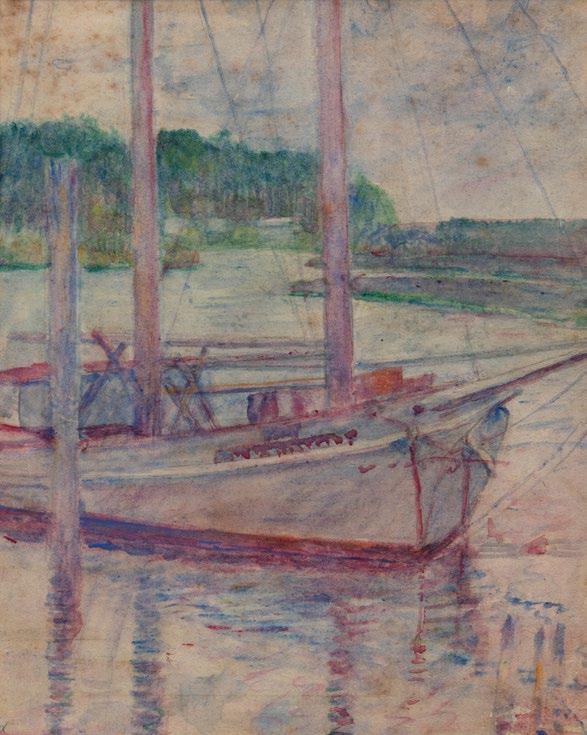
Provenance: The Estate of Anita de Hoa LeBlanc Breisacher, niece of the artist.
8. Marie de Hoa LeBlanc (American/Louisiana, 1874-1954, active Newcomb College, 1895-1914), “Courtyards and Crinoline, Spring Fiesta”, graphite on tracing paper, unsigned, inscribed with artist and title and “Spring Fiesta, New Orleans, 1949” pamphlet on backing paper, sight 29 1/2 in. x 23 1/2 in., framed, overall 33 1/2 in. x 27 3/8 in. x 1 in. [$400/600]
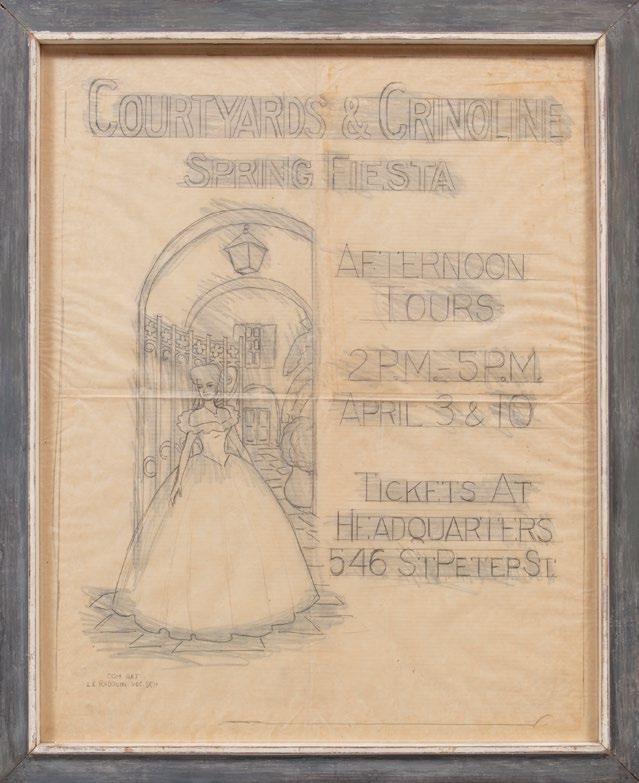
Provenance: The Estate of Anita de Hoa LeBlanc Breisacher, niece of the artist.
Note: Emilie and Marie de Hoa LeBlanc were two of five children born to Charles Emile LeBlanc and Elizabeth Eulalie de Hoa. Emilie was the older of the two, born in New Orleans in 1870, and Marie was born four years later. The family lived at 1225 Chartres Street, where the sisters remained after the death of their parents in 1920 until they moved to a home on Coliseum Street in 1930. The pair remained extremely close, and they lived, worked and traveled together until Emilie’s death in 1941.
Both women attended Newcomb College which would mark the beginning of their long and flourishing relationship with the institution. As some of the earliest pioneering students, their works were included in the first public exhibition of Newcomb’s decorated pottery in 1896. Later, they became paid instructors where they influenced a generation of young female artists. The pair were well-recognized in their field – with the Museum of Fine Arts Boston acquiring one of Emilie’s oak leaf design vases as early as 1899 after exhibiting a selection of ten Newcomb pots, and Marie winning the bronze medal at the 1904 Louisiana Purchase Exposition in St. Louis for one of her designs. The sisters’ skill stands out even among the group of talented women at Newcomb Pottery, and they became two of the most accomplished and prolific decorators during the early years of production. Their vibrant paintings and surviving sketches serve to further highlight their artistic gifts and creativity.
9. Ora Moss Reams (American/Louisiana, 1891-1988), “University Night, Tulane Stadium”, 1913, pen and ink on paper, signed and dated center, 13 1/8 in. x 8 1/2 in., framed, overall 20 5/8 in. x 16 1/4 in. x 1 in. [$600/800]
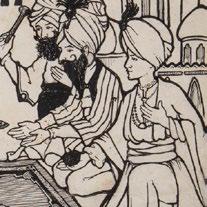

Note: Ora Moss Reams was born in Lake Charles, Louisiana and attended Newcomb College in the early 1910s. Many beautiful examples of her pottery exist, however, as is evidenced from this work done in her graduation year of 1913, she was an excellent draughtswoman as well. Reams registered as a graduate art student at Newcomb immediately following graduation, however she married John Stanley Scott in 1914, had two children and never returned to the school. Reams was widowed just four years after her marriage and subsequently lived with her mother in Lake Charles to raise her children. In the 1930 census, she is listed as an artist working from home.
10. Ethel Edwards (American/Louisiana, 1914-1999, active Newcomb College, 1933-1936), “Variations on a Dead Bird #5 (First Series #14)”, watercolor on paper, signed lower right, titled en verso, signed and titled on backing board, 11 in. x 8 1/4 in., framed, overall 14 1/8 in. x 11 1/4 in. x 1 1/4 in. [$200/300]

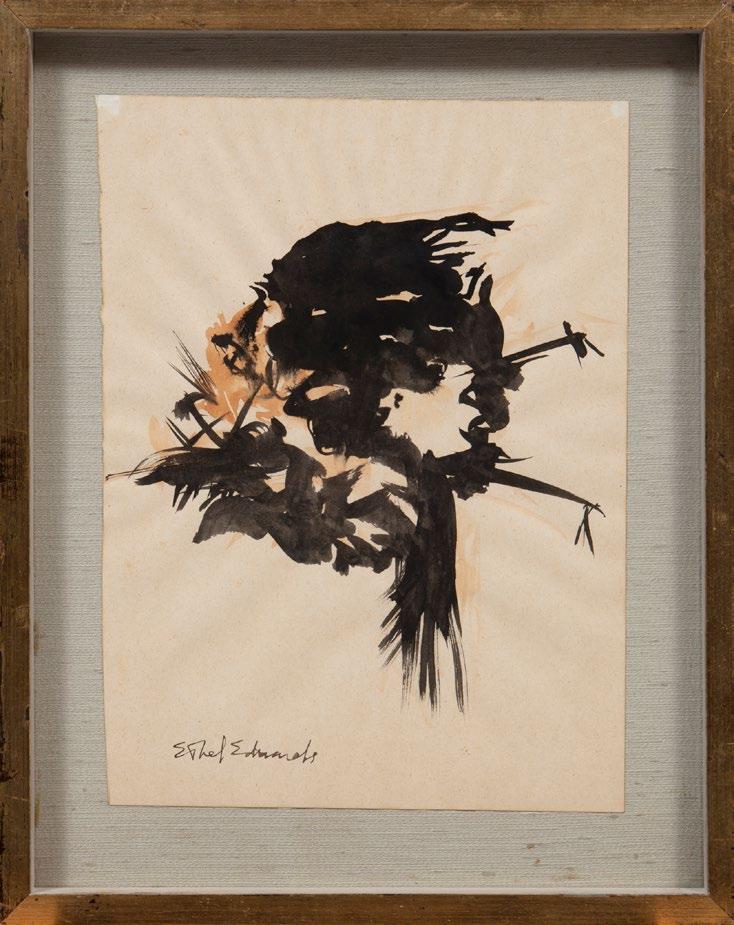
Note: Ethel Edwards was born in Opelousas, Louisiana in 1914. During childhood, her family relocated to New Orleans where she attended Newcomb College. There, she met her husband, Xavier Gonzales, who was her drawing instructor and an accomplished artist himself. After their marriage in 1936, they divided their time between New Orleans and Texas, where Gonzales ran an artist colony; they also traveled extensively in Europe together during this period. In 1939, Edwards won the 48 States Competition for the state of Texas and became known for her public murals under the New Deal. Edwards and her husband moved to New York City in 1942, where they each had their own studio. Edwards found work doing fashion illustrations and playbill designs, even as she continued showing her paintings in prestigious New York galleries and museums, including the Whitney Museum of American Art and the National Academy of Design. She resided in New York City until her death in 1999.
Ref.: Carter, Kate. “Ethel Edwards.” 64 Parishes. Sept. 12, 2012. www.64parishes.org. Accessed Mar. 3, 2023.
Note: Alberta Kinsey was born on a small farm in Ohio and attended a rural one-room schoolhouse before training at the Cincinnati Art Academy and the Chicago Art School. In 1918, she moved to New Orleans and quickly developed a deep fondness for the French Quarter, despite the fact that it was considered a less than desirable neighborhood for a woman living alone in the early twentieth century. Renting an apartment and studio in the Old Governor Claiborne Home at 628 Toulouse Street, Kinsey hosted the first meeting of the Arts and Crafts Club of New Orleans and found
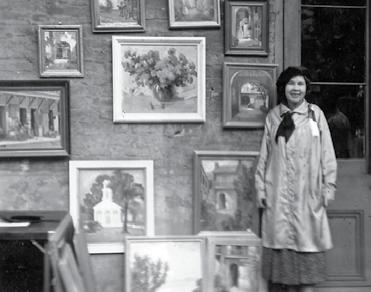
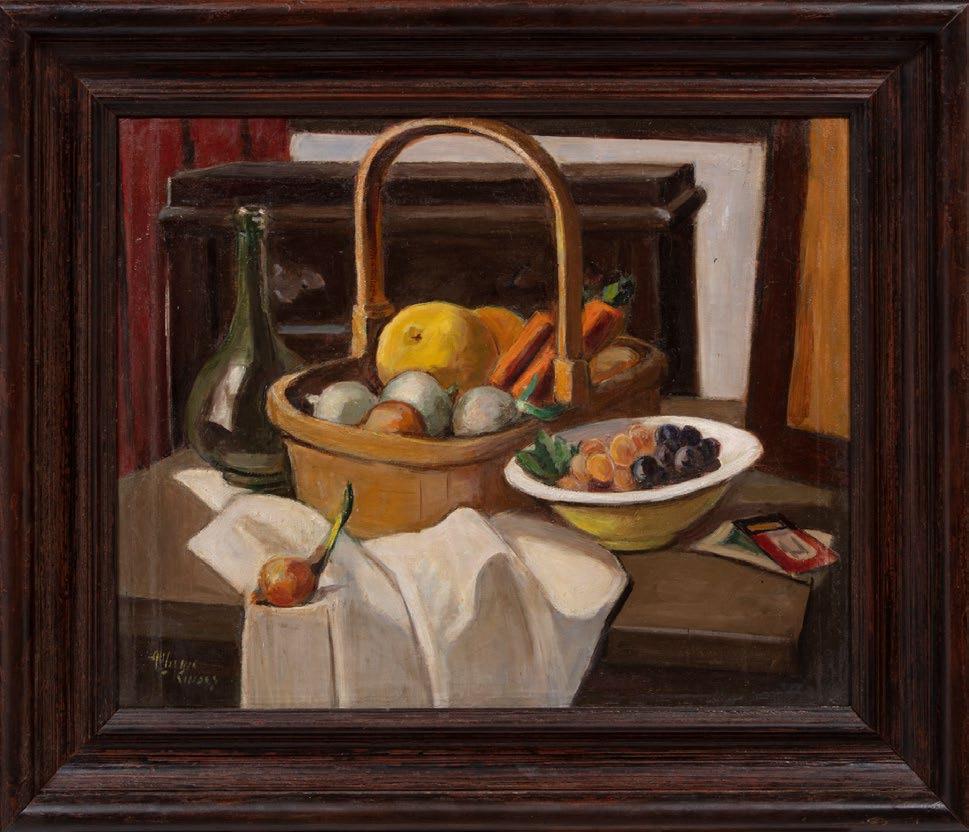
Provenance: Collection of Allison Kendrick, The Carroll-Crawford House, New Orleans; Neal Auction, Sept. 17, 2021, lot 16. Ill.: Read, Mimi. “Healing Power: Richard Keith Langham Brightens Up Allison Kendrick’s


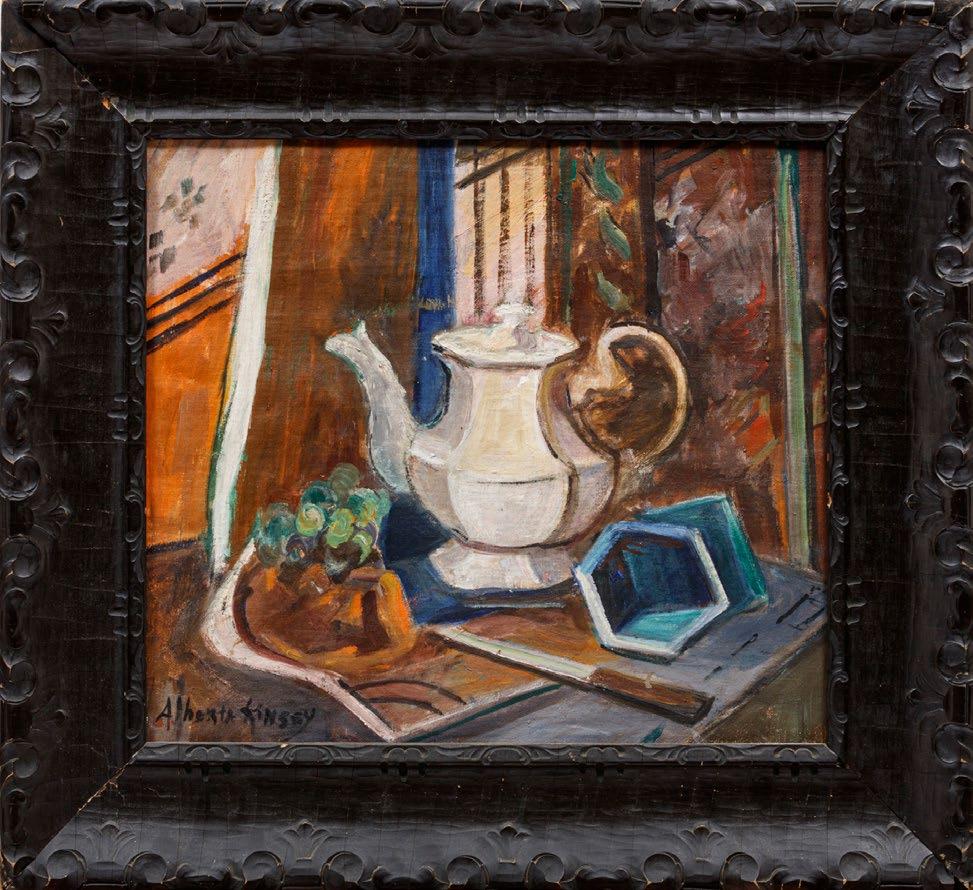
herself at the center of the burgeoning artistic community in the city. Her love of the historic buildings, cobblestone streets, and plant-filled courtyards inspired her to depict many scenes of French Quarter daily life. She has said of her early years in the city: “I didn’t have a great talent or the genius for it, but I did have the desire. It was love at first sight, even before I had seen a patio or mounted a creaky stair in the old houses I love so much.”
Ref.: Saward, Susan. “Alberta Kinsey.” 64 Parishes. www.64parishes.org. Accessed Mar. 3, 2023.
Note: Guatemalan-born Martha Wright Ambrose moved to New Orleans at the age of eight and started formally studying art in 1931 after winning a yearlong scholarship to the New Orleans Arts and Crafts Club’s art school. This twist of fate would pique her interest in art and change the trajectory of her life.

Ambrose moved to New York with the thought of pursuing acting, but she soon abandoned those ambitions and enrolled at the Art Students League in 1944, eventually meeting Jack Ambrose and marrying him in 1946. Upon her return to New Orleans, Ambrose struggled as her artistic ambitions were quelled by predominating social norms and the pressure to be a housewife. It would be the unfortunate event of the death of her husband, Jack, in 1961 that would provide Ambrose with the freedom to pursue her passion for art and career as a teacher and activist in the New Orleans arts community.
In 2003, Scott Veazey, a friend of Ambrose, purchased the late artist’s former home where he uncovered countless oils and watercolors spanning the arc of the elusive artist’s career. The discovery led to renewed academic and art historical interest in her work, and she became the subject of an overdue and impressive monograph—a joint effort between renowned local author, Roulhac Toledano, and Veazey published in 2016. Ambrose’s paintings span many decades and subject matters from local city scenes documenting New Orleans architecture to portraits and her travels around the world. Although a masterful painter, Ambrose did not seek to promote herself or sell her works, making them very rare on the market today. She had no need for the money and chose instead to live a bohemian life on her own terms.
Ref.: Toledano, Roulhac and Scott Veazey. Martha Wright Ambrose (1914-2000): The Rediscovery of a Southern Regional Artist. Lafayette: University of Louisiana at Lafayette Press, 2016.

Note: While Jane Smith Ninas Evans Sargent’s story is often overshadowed by that of her two famous ex-husbands, painter Paul Ninas and photographer Walker Evans, she was an accomplished artist in her own right. A graduate of Newcomb College, Jane was associated with the Arts and Crafts Club of New Orleans, and she was active in the flourishing arts community of the French Quarter. In 1933, Jane married noted artist Paul Ninas, and the couple shared a studio where they engaged in a friendly rivalry. Two years later, Jane met famed photographer Walker Evans while he was on assignment in New Orleans. She became Evans’ assistant and guide on his project documenting architecture along River Road. While Evans photographed the grand plantation homes, Jane completed oil paintings and crayon drawings, finding interest rather in the mundane and humble, and her style was based on simplified geometric forms with a muted color palette. Jane later accepted a job with the Federal Art Project of the WPA and continued her friendship with Evans. In 1939, after a scandalous affair, Jane left Ninas for Evans. The couple married a year later and would remain together until she left him in 1955. Jane was a source of inspiration for Evans during their time together, and he created a series of beautiful and haunting photographic portraits of her. As both artist and muse, Jane’s influence on her husbands and their influence on her will always be an intriguing question of the interplay between three talented artists - tied together by love, scandal and art. Jane later married for a final time and moved to Connecticut where she continued producing artwork until her death. Ref.: “Walker Evans and Jane Ninas in New Orleans, 1935-1936.” The Historic New Orleans Collection Newsletter, Volume IX, Number 1. Winter 1991. www.hnoc.org. Accessed Mar. 7, 2023.
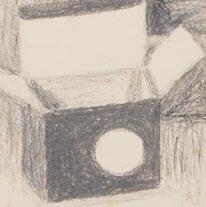
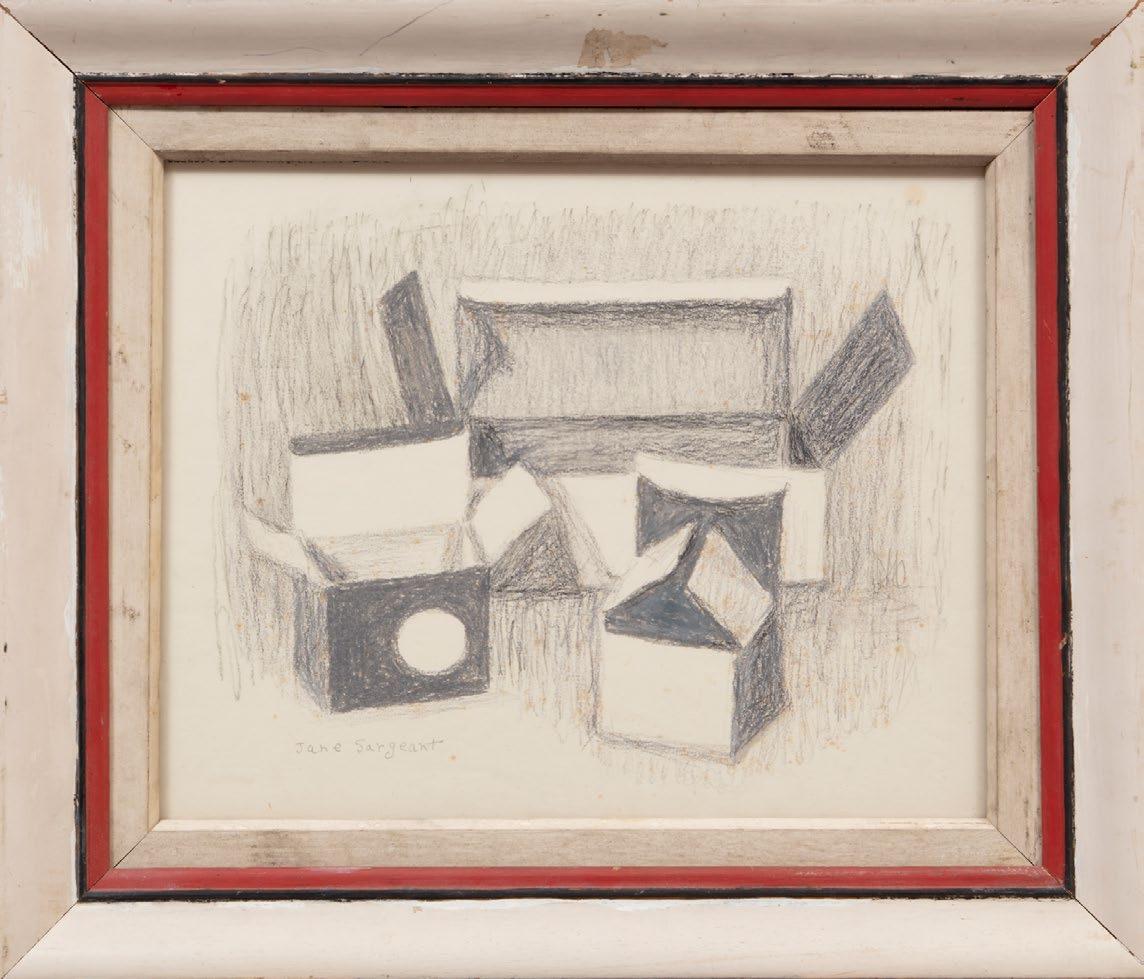
15. Josephine Crawford (American/Louisiana, 1878-1952), “Charles Henderson, the Artist’s Nephew”, oil on canvas, unsigned, 24 in. x 20 in., framed, overall 31 7/8 in. x 27 1/2 in. x 1 1/2 in.
[$2000/3000]
Provenance: Estate of the sitter.
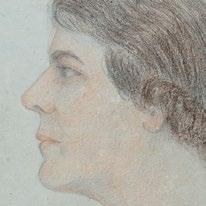
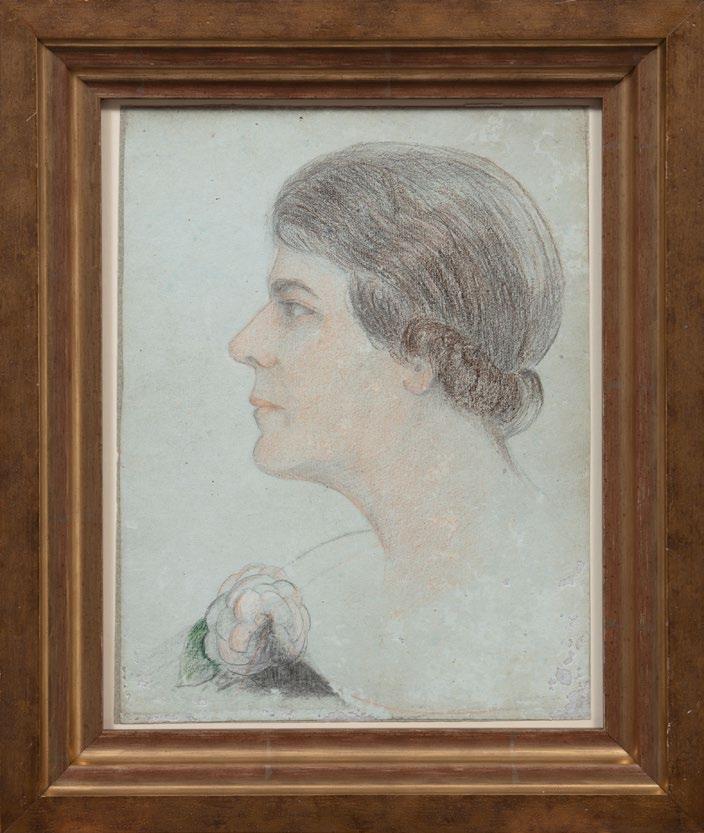
16.
Crawford (American/Louisiana,
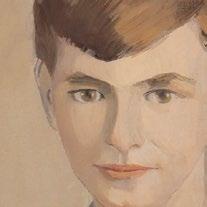
and pencil on
mounted to heavy paper, unsigned, 13 1/4 in. x 10 in., framed, overall 17 3/4 in. x 14 5/8 in. x 1 5/8 in. [$1000/1500]
Exh.: “The World of Miss Josephine Crawford”, Isaac Delgado Museum of Art (NOMA), New Orleans, LA, Sept. 13 - Oct 3, 1965 and listed in the accompanying catalogue.
Ill.: Hoffman, Louise C. Josephine Crawford: An Artist’s Vision. New Orleans: The Historic New Orleans Collection, 2009, p. 120.
Neal Auction would like to thank Lisa Rotondo-McCord, Deputy Director for Curatoral Affairs and Curator of Asian Art at the New Orleans Museum of Art, for her assistance with the cataloguing of this lot.
Note: In the early twentieth century, Josephine Crawford, along with her contemporaries, Paul Ninas and Will Henry Stevens, pioneered a new style of art in New Orleans. While the art scene in New Orleans was still embracing Impressionism, Crawford and the others brought with them the teachings of Europe, popularizing Modernism and Cubism and ushering in a new era in the Crescent City.
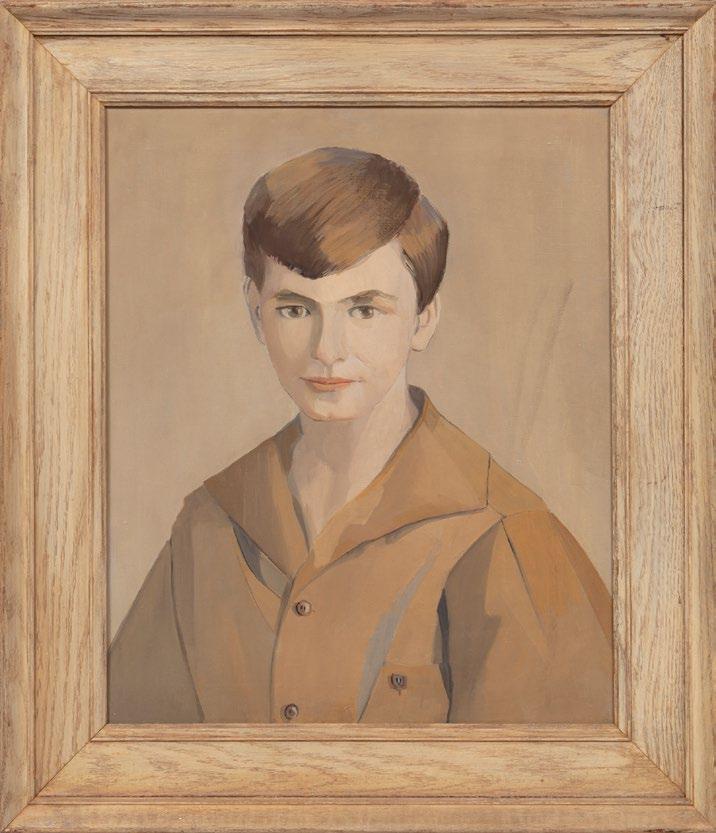
Crawford was born in New Orleans in 1878 and grew up in the French Quarter at 612 Royal Street. The daughter of Charles Campbell Crawford and Louise Bienvenu Crawford, she was raised speaking French and English. The young Crawford was a budding poet who drew inspiration from her family and her neighborhood. With her words, she captured the vibrant details of her surroundings, and her knack for observation would later make an appearance in her material art.
Crawford started seriously studying art in her forties, attending classes a block away from her home in the newly inaugurated Arts and Crafts Club. New Orleans in the 1920s was becoming quite the cultural hub, drawing creatives from all over the country, including author William Faulkner. The Arts and Crafts Club provided an epicenter for local artists to take classes and exhibit their works and for the public to view important pieces from artists around the world. New Orleans remained Crawford’s home base where she eventually returned after leaving in 1927 to study under André Lhote in Paris, then at the Kunstgewerbeschule in Vienna. Her tenure in the Arts and Crafts Club had her working alongside artists such as Clarence Millet, Alberta Kinsey, Jane and Paul Ninas, John McCrady, Caroline Durieux, and Enrique Alferez among others. Her unique, fluid style won her the Club’s prestigious Blanche Benjamin Prize in 1934 for her portrait of a Creole widow entitled “Rue Kerlerec,” showcasing the strength of her creative talent particularly in portraiture. Crawford’s work was well-received in her lifetime and exhibited in cities such as Philadelphia, New York and Paris. She was often singled out in reviews for her unique and enthralling style. She was an integral part of the vibrant chapter of local art history encompassing the life of the Arts and Crafts Club of New Orleans which eventually shuttered in 1951. In 2009, The Historic New Orleans Collection held a retrospective exhibition of her works. Ref.: Hoffman, Louise C. Josephine Crawford. New Orleans: The Historic New Orleans Collection, 2009.
Note: Wisconsin-born, Dorothy Colette Pope Helder was raised in Duluth, Minnesota. A strong-willed, independent child and adolescent, Colette once ran away from home and cut off her hair, securing a job as a delivery boy for Western Union. Her deception was revealed when her mother recognized and apprehended her on one of her deliveries and dragged her home. Later she had a job as the secretary at Rachel McFadden Art Studio. It was there, while taking classes, that she eventually met her future husband in her instructor, Swedish artist Knute Heldner. Knute was twenty-five years older than Colette.

The couple eloped in 1923 and, to find reprieve from the Minnesota winters, travelled to New Orleans. That fateful trip would alter the trajectory of their lives, and they spent a large part of their life together alternating between New Orleans winters and Minnesota summers. They also spent time from 1929-1932 travelling throughout Europe. As Sara Saward points out, “Colette’s images of Paris are filled with abundant and humorous anecdotal detail: boisterous café clientele, fashionable women walking poodles, and sailors ogling brazen streetwalkers, all drawn as caricatures.” This same style in which she documented the Quartier Latin was later transposed to her French Quarter scenes as she considered the two neighborhoods similar. Her sensitive portrayals of quaint French Quarter courtyards captured the romantic beauty of the city.
The Heldners, upon their return to New Orleans, applied their impressionist, loose brushstrokes and unique visual language to the surrounding landscapes, reviving the more strictly rendered, Barbizon-like bayous of their predecessors such as Richard Clague, William Henry Buck and Joseph Rusling Meeker. Their fresh interpretations breathed new life into the genre, and she and Knute became integral fixtures of the New Orleans art scene.


Following Knute’s death in 1952, Colette’s style became more expressionistic and her palette free, more brash and vibrant. She began executing her “Swamp Idylls” with improvised flourish as if to capture on canvas the wild forms of the bayous. While married, she was a devoted wife. While widowed, she was able to focus on her craft, reputedly then saying, “I am the only artist in the family!”
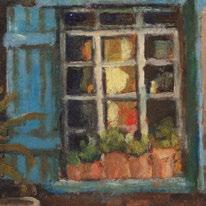

Ref.: Saward, Susan. “Colette Pope Heldner.” 64 Parishes. Sept. 12, 2012. www.64parishes.org. Accessed Mar. 4, 2023.




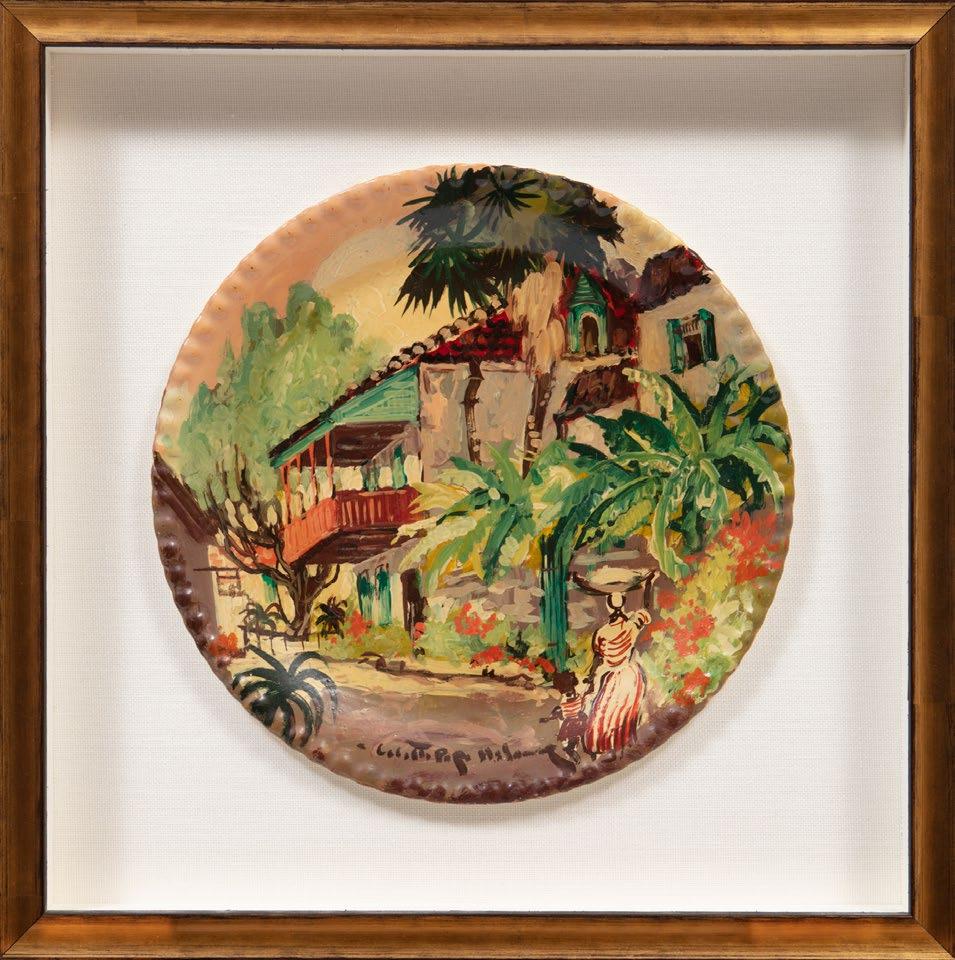
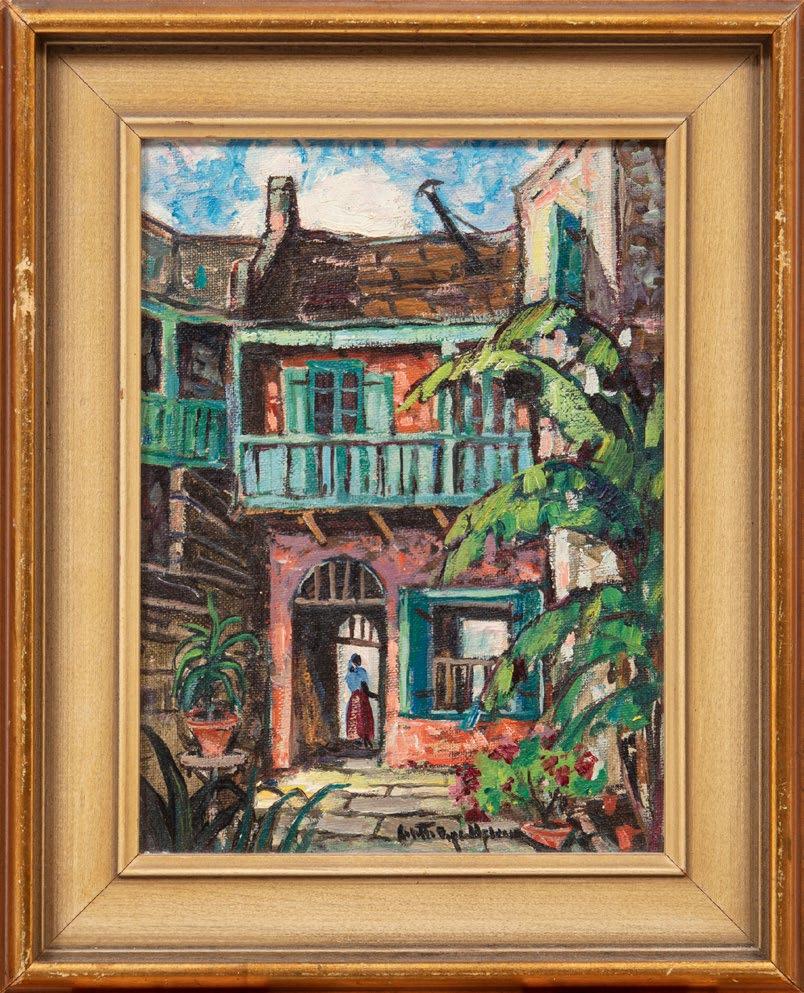
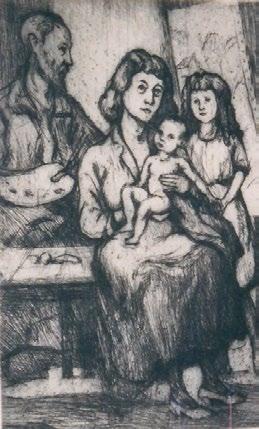

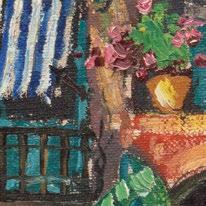


[$1000/1500]
Provenance: Knoke Fine Arts, Marietta, GA.

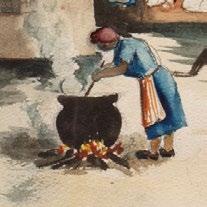
Note: For much of the twentieth century, Hattie Saussy was closely associated with the art community of Savannah where she was born. Saussy traveled extensively, both nationally and internationally, as a young adult seeking to perfect her impressionistic style of painting, and she studied at the New York School of Fine and Applied Art (later the Parsons School for Design), the National Academy of Design, and the Art Students League of New York. She faced a number of challenges in her life, including blindness in one eye from a childhood accident, World War I while living in Europe, and a broken hip in her later years. The artist painted portraits of family and friends, although she is perhaps best known for her sun-dappled, lush landscapes of the South, often captured en plein air on her travels throughout the region. Saussy’s work can be found in important public and private collections nationwide.

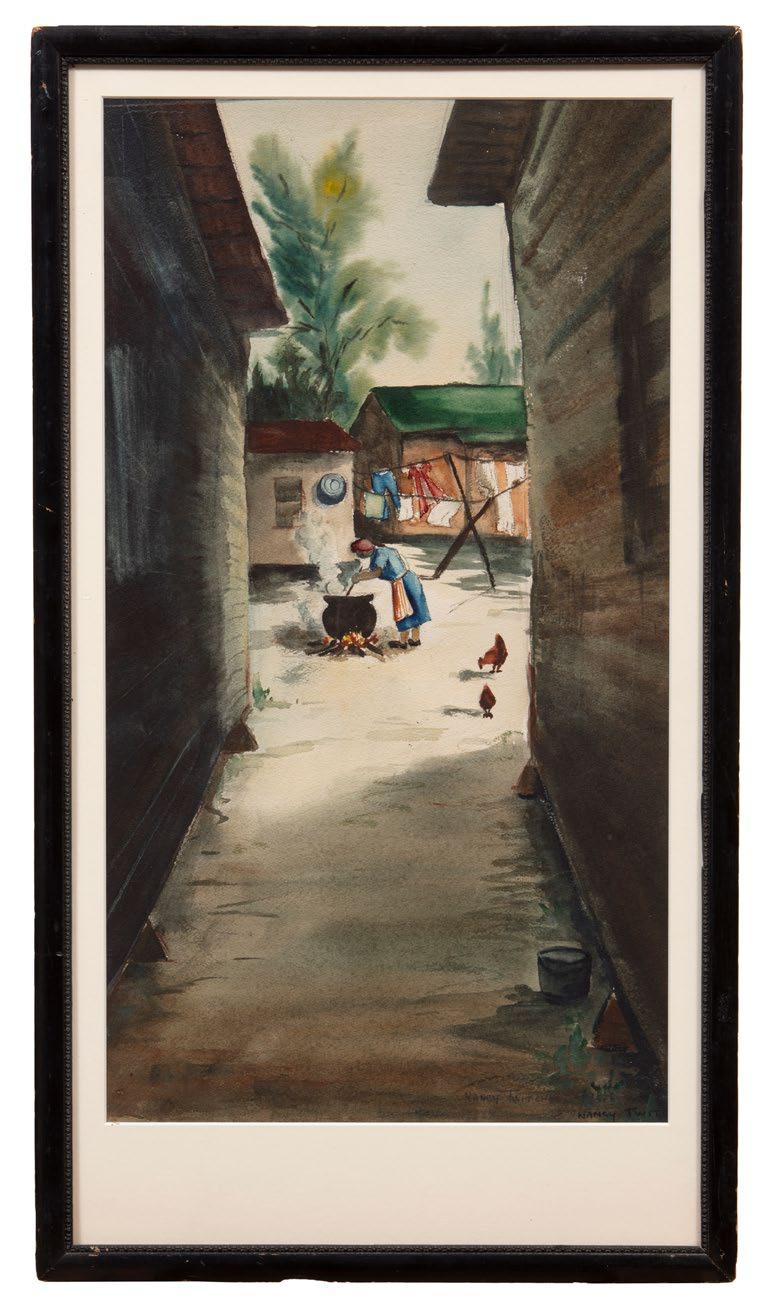
Ref.: Klacsmann, Karen Towers. “Hattie Saussy (1890-1978).” New Georgia Encyclopedia. May 26, 2015. www.georgiaencyclopedia.org. Accessed Mar. 3, 2023.
Note: Nancy Twitchell was born in Richland County, Ohio in 1927. She graduated from Mansfield Senior High and studied music at Ashland University where she received her Bachelor of Fine Arts. She later earned her master’s degree at Indiana University. She was a beloved choir director at Madison Schools, and she taught classes at her alma mater, Ashland University when she was not singing in her church choir or the Mansfield Symphony Chorus.
The younger sister of Mansfield artist, Margaret Twitchell Swank, Nancy was likely influenced by her successful sister to try her hand at painting. Margaret was an integral part of the Mansfield art scene, where she helped to establish the Mansfield Fine Arts Guild in 1947 and was eventually named a lifetime trustee of the Mansfield Art Center. The passionate Twitchell sisters were creative forces in their community.
Note: Clara Stroud was born in New Orleans in 1890 to watercolor artist, Ida Wells Stroud and her husband, George Stroud. When George Stroud died only four years after his daughter’s birth, Ida moved the family to Brooklyn, New York to pursue a career in fine art. With her mother as a caretaker for her two children, Ida was able to attend Pratt Institute. In 1905, Ida moved her family once again to East Orange, New Jersey where Clara attended high school then followed in her mother’s footsteps and continued her art education at Pratt Institute.
At the turn of the century, Ida and Clara were heavily involved with the Arts and Crafts Movement, both experimenting with different forms and media to create finely crafted decorative objects. However, watercolor was the medium for which they became best known. Peter Hastings Falk wrote: “Mother and daughter, Ida and Clara Stroud were at the forefront of a nationwide movement that established watercolor as a medium uniquely suited to the spirit of American artists.”
In 1922, Clara and her husband, Charles Colvin, purchased a sixty-acre farm in Herbertsville, New Jersey. A few years later, Stroud and Colvin would divorce, and Clara would invite her mother to move into her home. Clara was an avid gardener, and the numerous gardens on the farm were important inspiration for the artists.
They became active teaching painting classes, and Clara traveled in the summers to take classes herself at the Ringling School of Art in Sarasota, Florida and visit William Spratling in Taxco, Mexico.

After Ida’s death in 1944, Clara established an annual prize through the American Watercolor Society for the best woman watercolorist. Shortly after her own death in 1984, Clara was honored as a life member of the American Watercolor Society. The Strouds’ brilliance in watercolor, along with their commitment to art education in New Jersey, are a fitting legacy for these talented women.
In the work offered here, Stroud painted the Old Goose Creek Church in Summerville, South Carolina, built in 1719 by early English planters from Barbados. Stroud painted the church in 1956 shortly before it underwent an approximately twentyyear period of neglect. In the 1990s, the community was able to restore the church and maintain the building, though owing to its rural location it is infrequently used for church services. Stroud likely painted the church and wrote the attached notes about its history on one of her summer travels to a warmer locale.
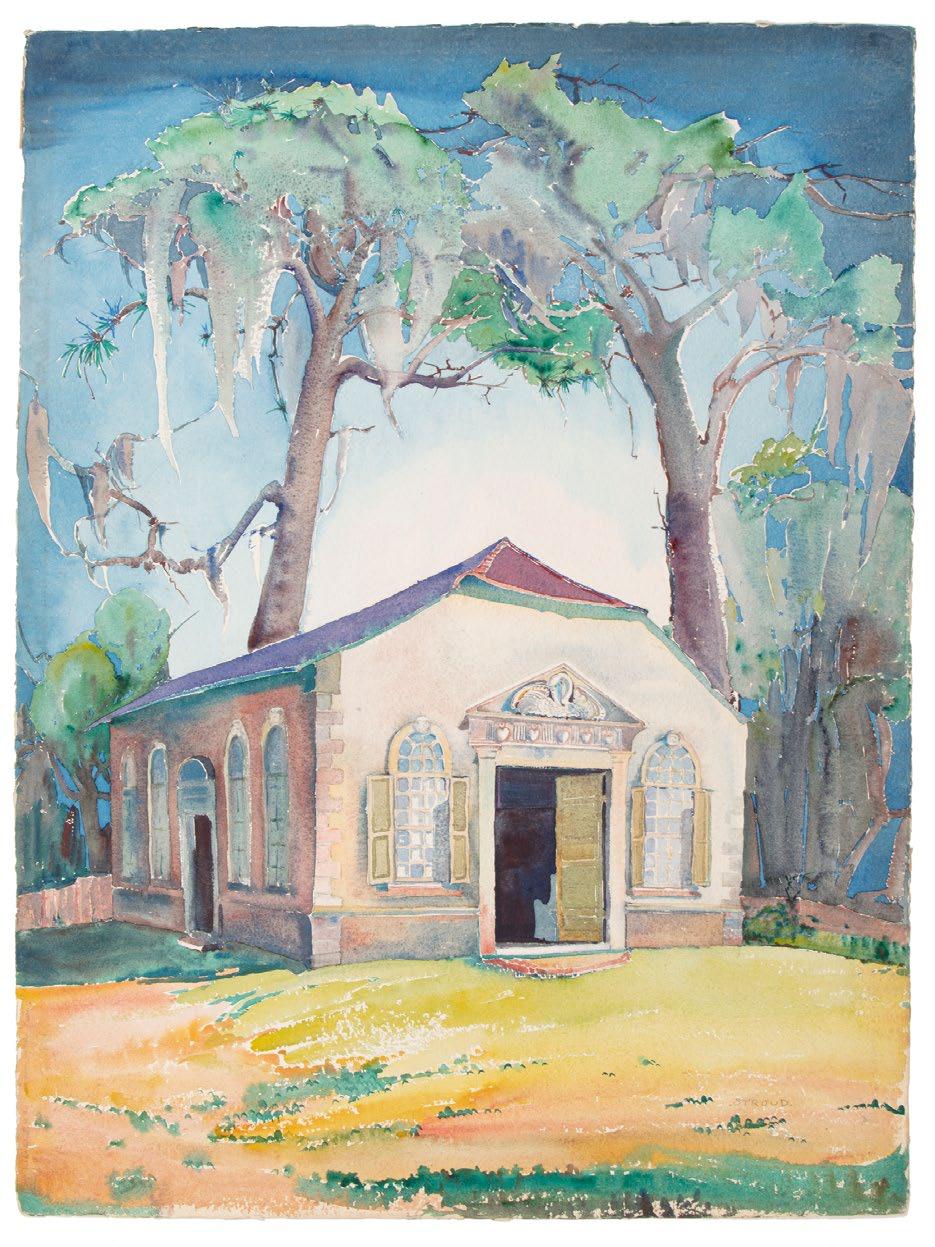
Note: Carrie Hill was born in the coal mining town of Vance, Alabama, named for her maternal grandfather Dr. William Vance. The family moved to Birmingham, Alabama in 1891 when Hill was sixteen. Although she traveled and studied nationally and abroad, Hill’s permanent residence remained in Birmingham where she was a charter member of the Birmingham Art Club established in 1908 which eventually became the basis for the Birmingham Museum of Art. Hill attended workshops under the tutelage of Elliot Daingerfield and Arthur R. Freedlander, artists who are credited with having had great influence on her own artistic style and color palette. She also studied with American Impressionist George Elmer Browne at his Provincetown, Massachusetts school and toured Europe several times with his “European Painting Group.” Hill primarily painted floral still lifes and plein air landscapes, subjects enlivened by her impressionistic style and radiant hues.
Hill was honored with many exhibitions in the United States, and in 1928 two of her paintings were chosen for the Exposition Officielle des Beaux-Arts, known as “Le Salon,” by the Société des Artistes Français. During the Great Depression, she was one of four Alabama artists to receive commissions through the Public Works of Art Projects Division of the Public Works Administration. After her death in 1957 the Alabama Art League established the “Carrie Hill Memorial Award” for landscape painting. Ref.: Linn, Julius. “Carrie Lillian Hill (1875-1957).” The Artist Carrie L. Hill Association. www.artistcarriehill.com. Accessed Mar. 1, 2023; Birmingham Museum of Art. “In the Foothills of the Pyrenees.” Birmingham Museum of Art. www.artsbma. org. Accessed Mar. 1, 2023.
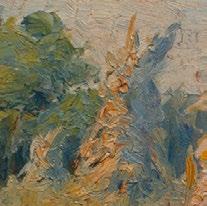
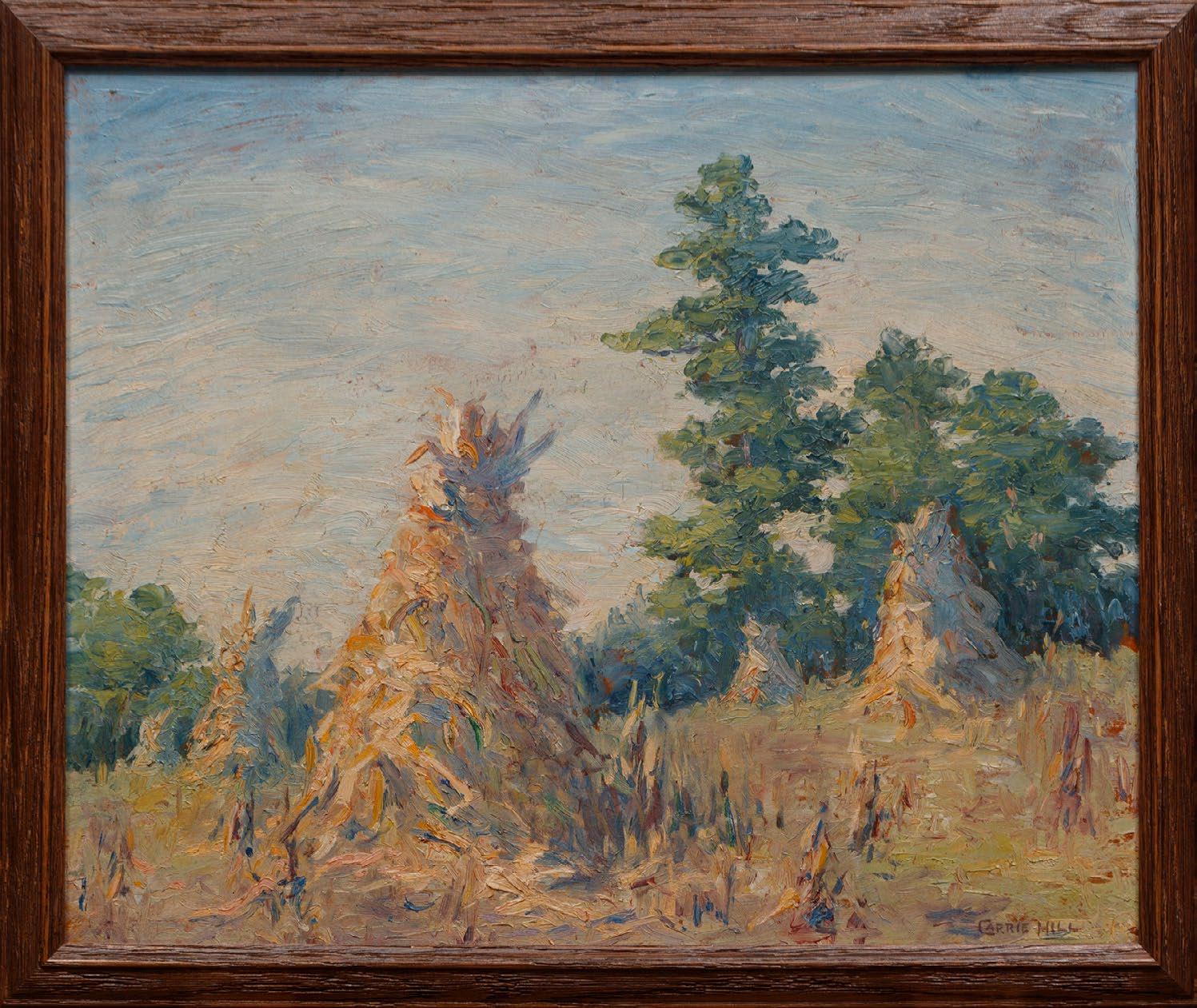
“The subject matters little. It is what the artist puts into it that counts. So the field to me is limitless—there are possibilities everywhere—and everything appeals to me that is beautiful and artistic.” – Carrie Hill
Note: Helen Pickle was a self-taught artist from Aberdeen, Mississippi who began painting around the age of sixty after surviving a stroke that left her partially paralyzed. Following her illness, Helen and her husband Reuban Pickle faced a difficult transition, not only having to adapt to her new disability, but also the death of their only son a few years prior. They closed their dry-cleaning business and retreated in isolation. One day a friend encouraged Helen to paint with a set of acrylic paints, and within a couple of years, Pickle developed her own aesthetic which
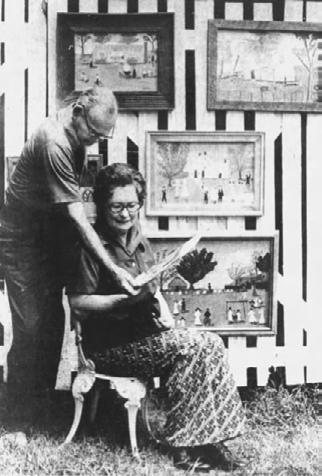

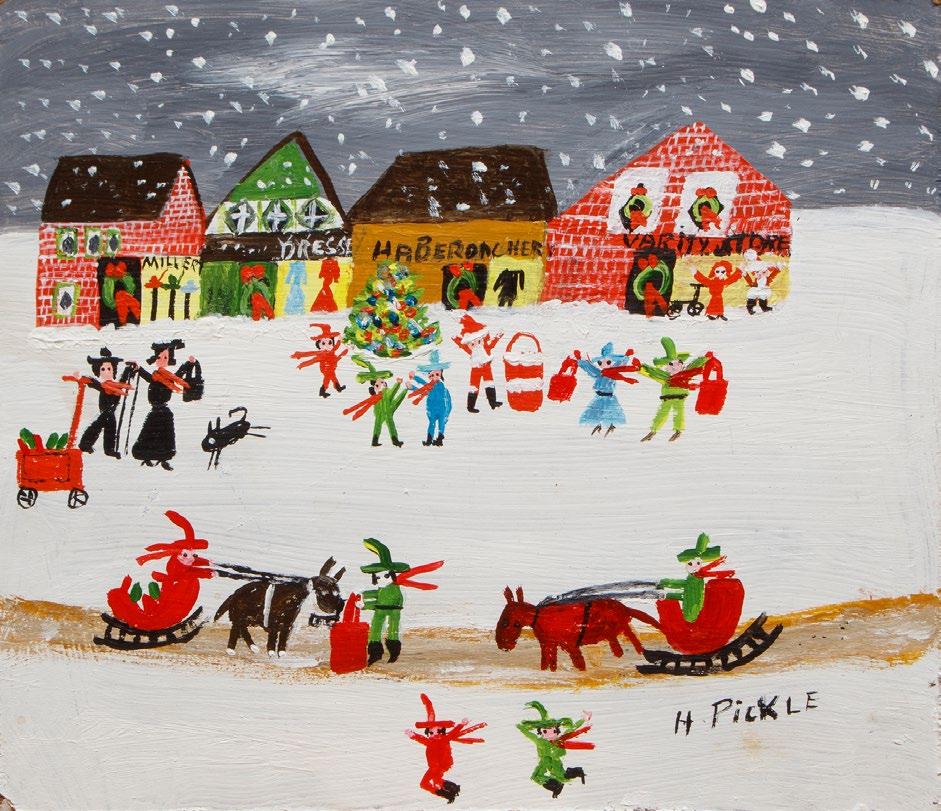
garnered local interest. As her work grew in popularity, her husband supported her artistic pursuits by crafting wooden frames for works to be sold and displayed. She became known for her “odd little scenes,” depicting open spaces dotted with minute figures and furniture in disjointed perspectives. A quiet sentimentality colors her work with a bittersweet consideration of family and celebrations past. Ref.: Fleming, Anne. “Aberdeen’s Helen Pickle to show her happy paintings at Lyon.” The Clarksdale Press Register. Sept 4, 1975. www.newspapers.com. Accessed Mar. 3, 2023.
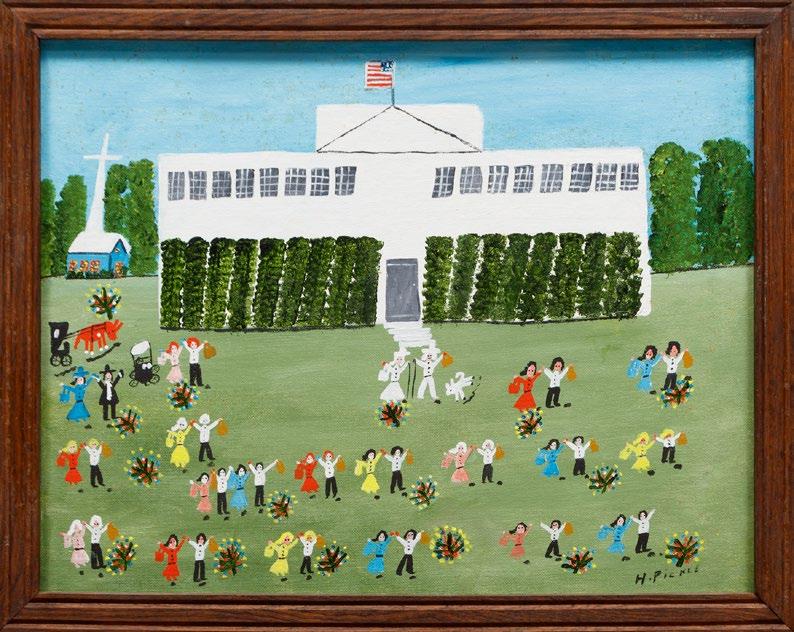
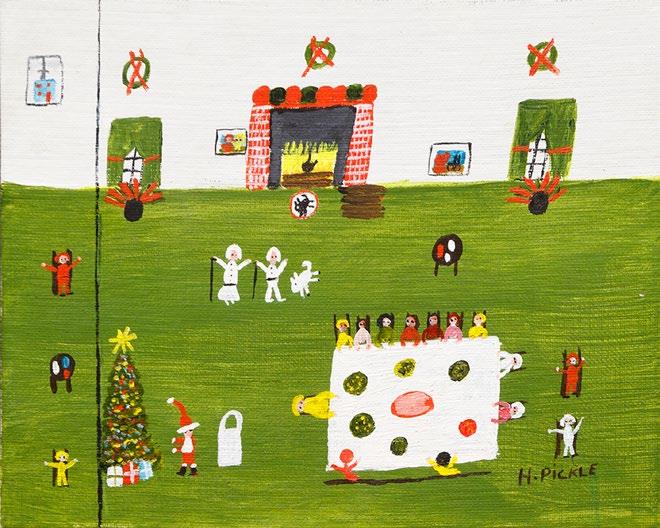
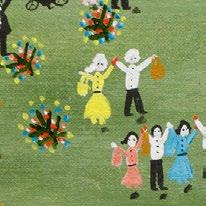

Note: An early Southern impressionist, Geral Knowles Marley resided in Jackson, Mississippi and exhibited with many of the important women Southern artists of the time. Her work was included in a widely reported 1930 exhibition of the Mississippi Art Association (MAA), along with Caroline Compton, Lucille Sharp, and Mary Clare Sherwood, among others. The MAA exhibition was a prestigious event with winners of the juried competition receiving medals designed by Newcomb College art professor Ellsworth Woodward. Like her contemporaries, Marley drew inspiration from the surrounding landscape for her paintings.
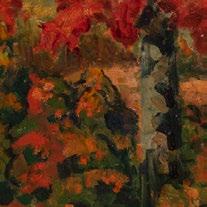
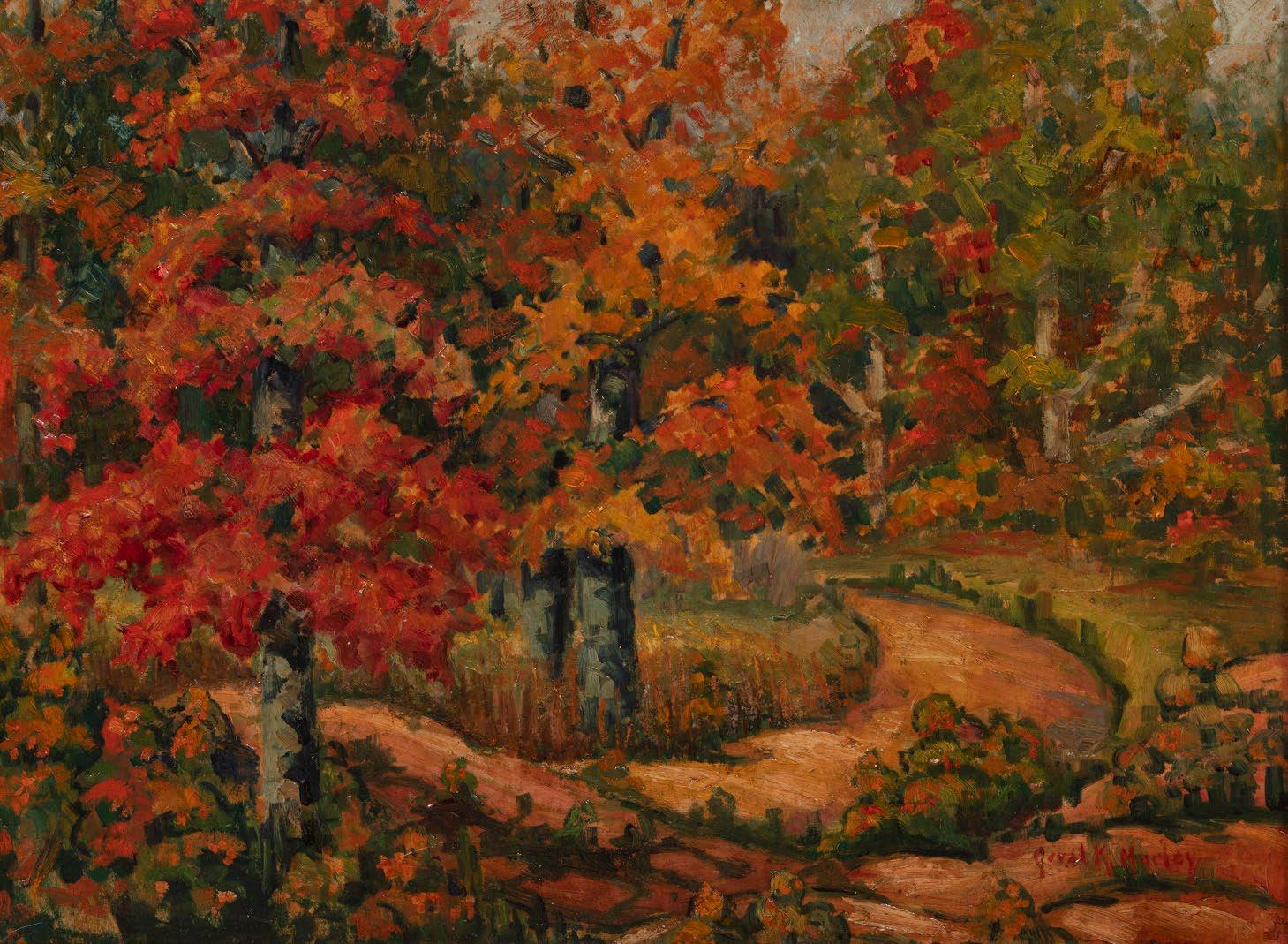
“Progress and change are the essence of living – for artist and non-artist. Without it stagnation and deterioration soon become evident. People who expand their knowledge and investigate, remain more youthful, have joyous experiences, and become more mentally alert.” – Marie
HullNote: Marie Hull was one of Mississippi’s most beloved and prolific artists. Her career spanned seven decades and resulted in a remarkable body of work which displays her unwavering commitment to growth and experimentation. Hull was born in Summit, Mississippi in 1890 and had her first art lesson in 1910 with Aileen Phillips, who was the only trained art teacher in Jackson at the time. Hull quickly acknowledged her passion and talent for painting and soon enrolled at the Pennsylvania Academy of the Fine Arts in Philadelphia for one year, followed by a stint at the Art Students League of New York. Returning to Jackson, she gave art lessons in her home and worked as a commercial artist and illustrator. In 1917, Hull married Emmett Johnston Hull who encouraged her painting, and the couple traveled extensively. Around 1920, Hull’s stylistic personality as an artist began to emerge following extensive studies under some of America’s best artists.
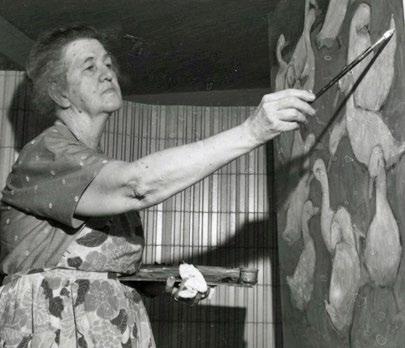

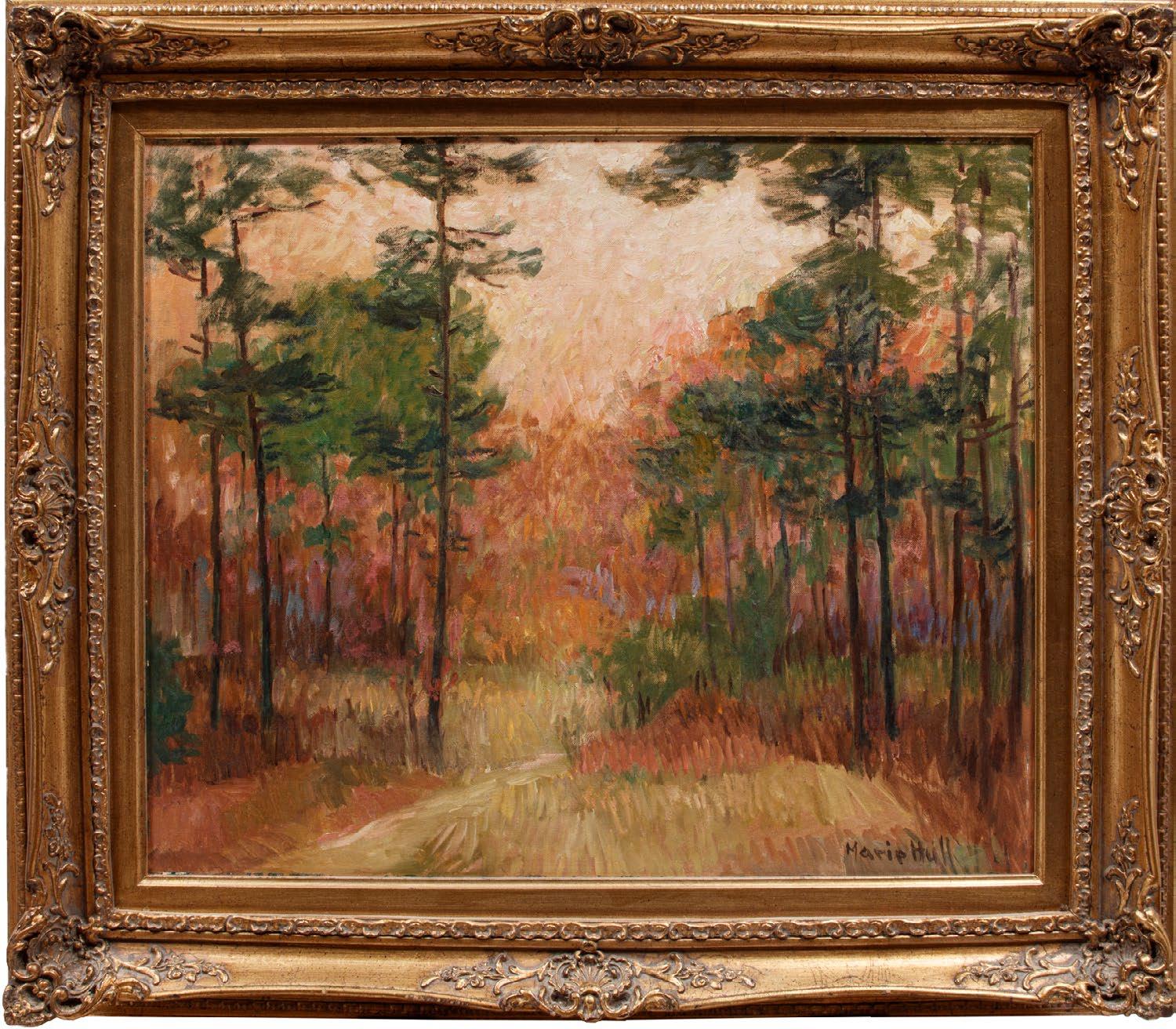
Provenance: Descended in the family of the artist.
3/4 in. [$1500/2500]
Provenance: Descended in the family of the artist.
Provenance: Descended in the family of the artist.
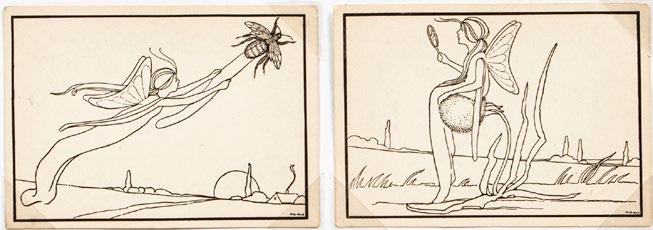
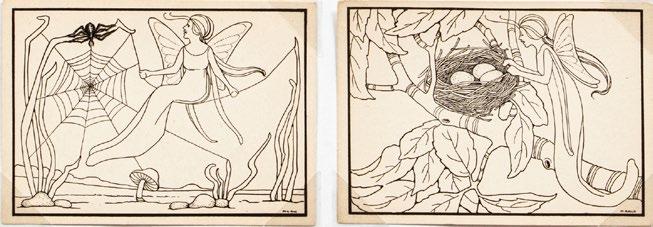
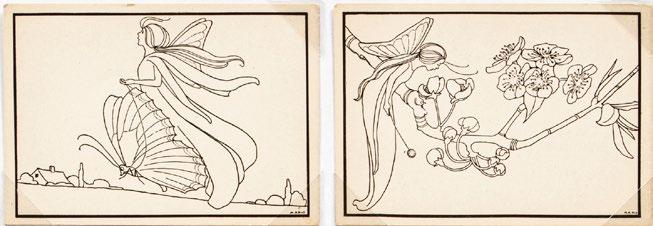


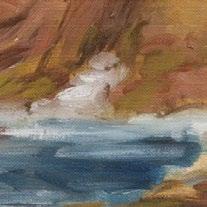

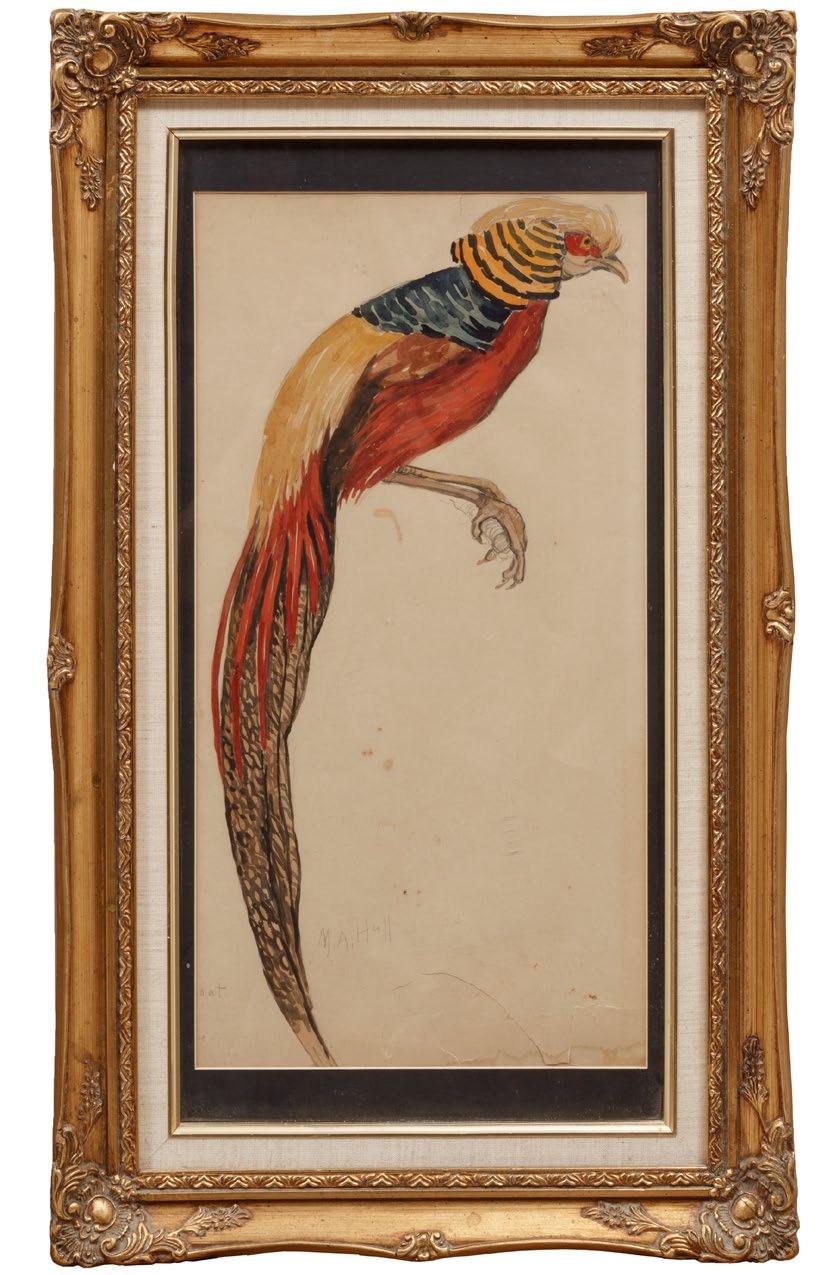
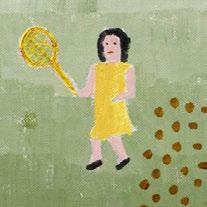
Note: Renowned for her self-taught painting style, Theora Hamblett became one of Mississippi’s most celebrated and distinguished artists. Hamblett began her professional career late in life at the age of fifty-five, eschewing the abstract style popular at the time in favor of subjects more personal. Over the ensuing twenty-two years, she developed an extraordinary oeuvre that is as unique as it is powerful. Many of Hamblett’s paintings concentrated on her childhood memories, especially of the chicken farm in Paris, Mississippi where she spent her childhood. In nearly all her landscape paintings, she included animals or people, with the belief that those additions gave life to the scenes. She also painted many landscapes that featured children playing games to evoke a sense of nostalgia. After an accident which broke her hip and required surgery in 1954, Hamblett began to paint her dreams and visions, many with religious themes and elements. The same year, New York gallery owner and famous collector, Betty Parsons, discovered
Hamblett’s work and subsequently one of her paintings was included in a 1955 show of new acquisitions at the Museum of Modern Art. Hamblett’s paintings have two main hallmarks that set them apart – pattern and color. Almost obsessively flat areas of color off-set by the equally flat subjects are in dramatic contrast to her distinctive and highly patterned trees. The effect of the foliage evokes movement, as each leaf is individually painted resulting in layers of color. Hamblett was a lifelong resident of Lafayette County in Mississippi, and upon her death in 1977, she willed most of her collection of paintings to the University of Mississippi, making them rare to the market today.
Ref.: Hamblett, Theora. Theora Hamblett Paintings. Jackson: University Press of Mississippi, 1975; Theora Hamblett.” Greg Thompson Fine Art. www. gregthompsonfineart.com. Accessed Mar. 6, 2023.

[$5000/8000]
Note: Born near the end of 1886 on the notorious Hidden Hill Plantation in Marco, Louisiana, Clementine Hunter moved to nearby Melrose Plantation in 1902 and worked in a variety of positions from cotton picker to housekeeper and cook. The plantation was owned by John and Cammie Henry and later, after the death of John, Mrs. Henry retained the property and continued to plant, sell crops and maintain the grounds.
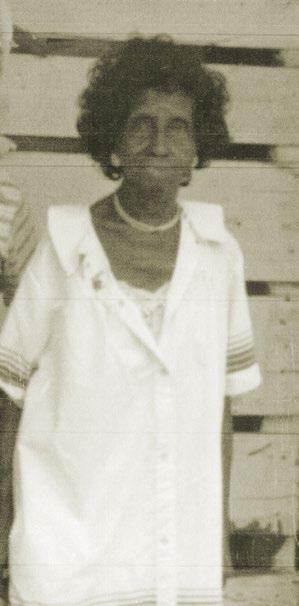
Melrose thrived under her care, and Mrs. Henry became known for her dedication to the arts and for her collection of historic and culturally significant items. She often hosted social gatherings for artists and writers, and Hunter, at the time a cook at Melrose, came across leftover paints and found inspiration to create her first paintings in the late 1930s or early 1940s. During this same period, François Mignon arrived at Melrose Plantation for a six-week visit that turned into a three decade long stay. He became the plantation’s historian and befriended Hunter. With both Mignon and Henry encouraging Hunter to paint, she became committed to her art, creating not only beautiful smallscale paintings on canvas and board, but also large-scale murals which decorated the structures on the property.
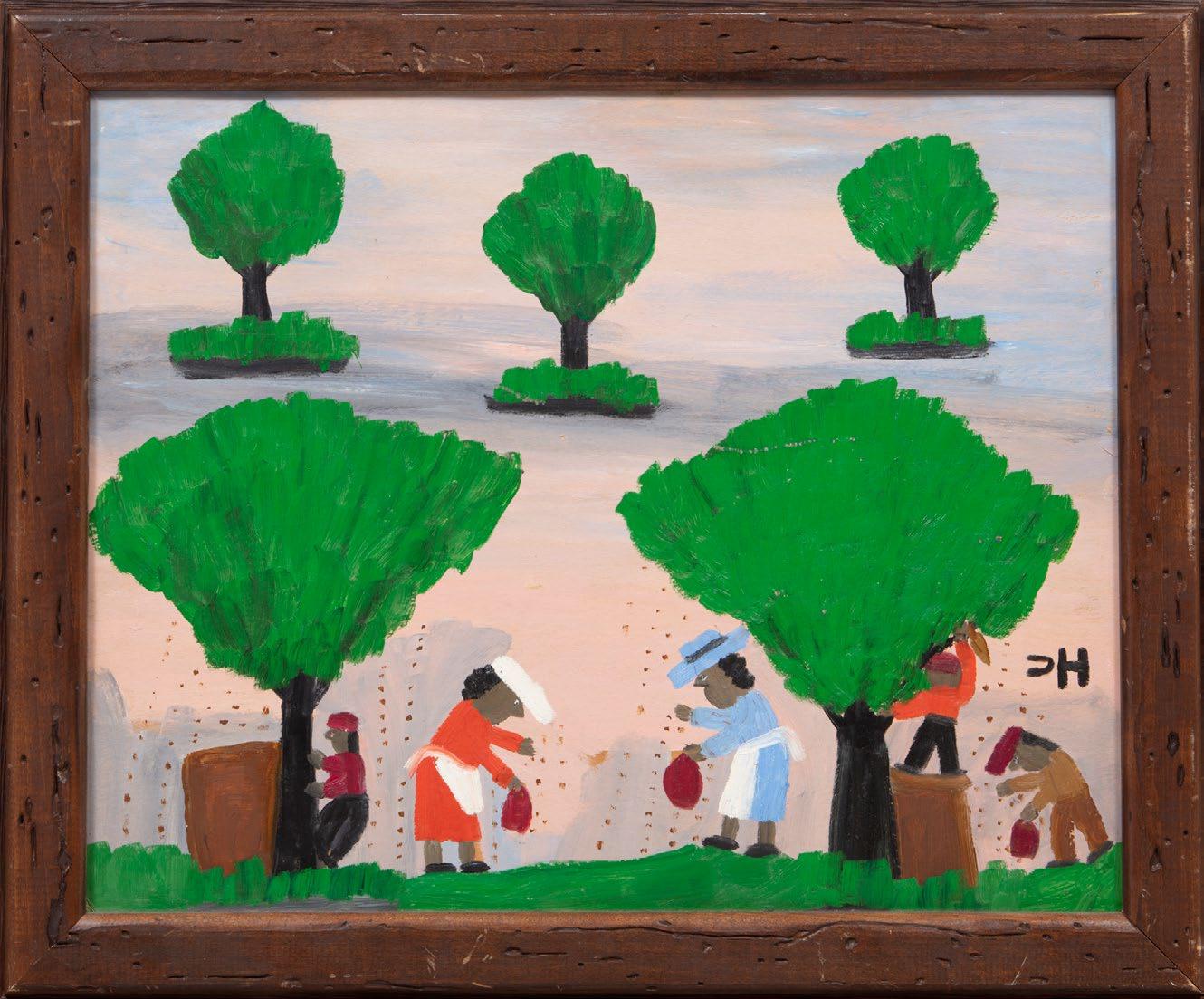
Hunter’s compositions reflected daily life at Melrose, and in her thick brushstrokes and strong primary colors, she documented the lively scenes that surrounded her from the labor-intensive cotton harvesting and pecan picking to the leisurely pursuits of Saturday nights at the juke joint. Hunter’s unique style and vision captured an integral part of southern history, and she was well-recognized in her lifetime for her artistic achievements with many exhibitions. Like so many artists, she had an intense desire to create, and her subsequent oeuvre is one that continues to receive global recognition and accolades to this day.

Provenance:
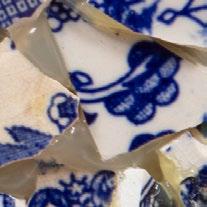
Note: Mary Proctor was born in Florida and raised by her grandparents. Even as a small child, she was frequently found preaching to everyone around her. Proctor worked in the nursing field and as the proprietor of a daycare center before moving into the flea market business and collecting as a professional hobby. After a house fire tragically claimed the lives of her grandmother, aunt and uncle, Proctor turned to God and realized she was being instructed to paint. Her works are rooted in spiritual discovery and healing with Proctor’s vibrant figures pictured alongside insightful phrases inscribed throughout. Her first works were portraits of family members who had died in the fire, and set outside on the lawn, they caught the attention of curator and critic Tricia Collins, who purchased them for her gallery in New York. Proctor had her first one-woman show at All Saints Gallery in Tallahassee in 1995 and a year later, a one-woman show at the Tricia Collins Grand Salon in New York. Proctor frequently signs her work as “Missionary Mary L. Proctor,” stating “I’m going to get a message out to broken women’s, a message to help and glorify them, so men can search their hearts, learn to respect us and treat us the right way.”
Ref.: Proctor, Mary. “Mary Proctor.” Souls Grown Deep. www.soulsgrowndeep.org. Accessed Mar. 6, 2023.
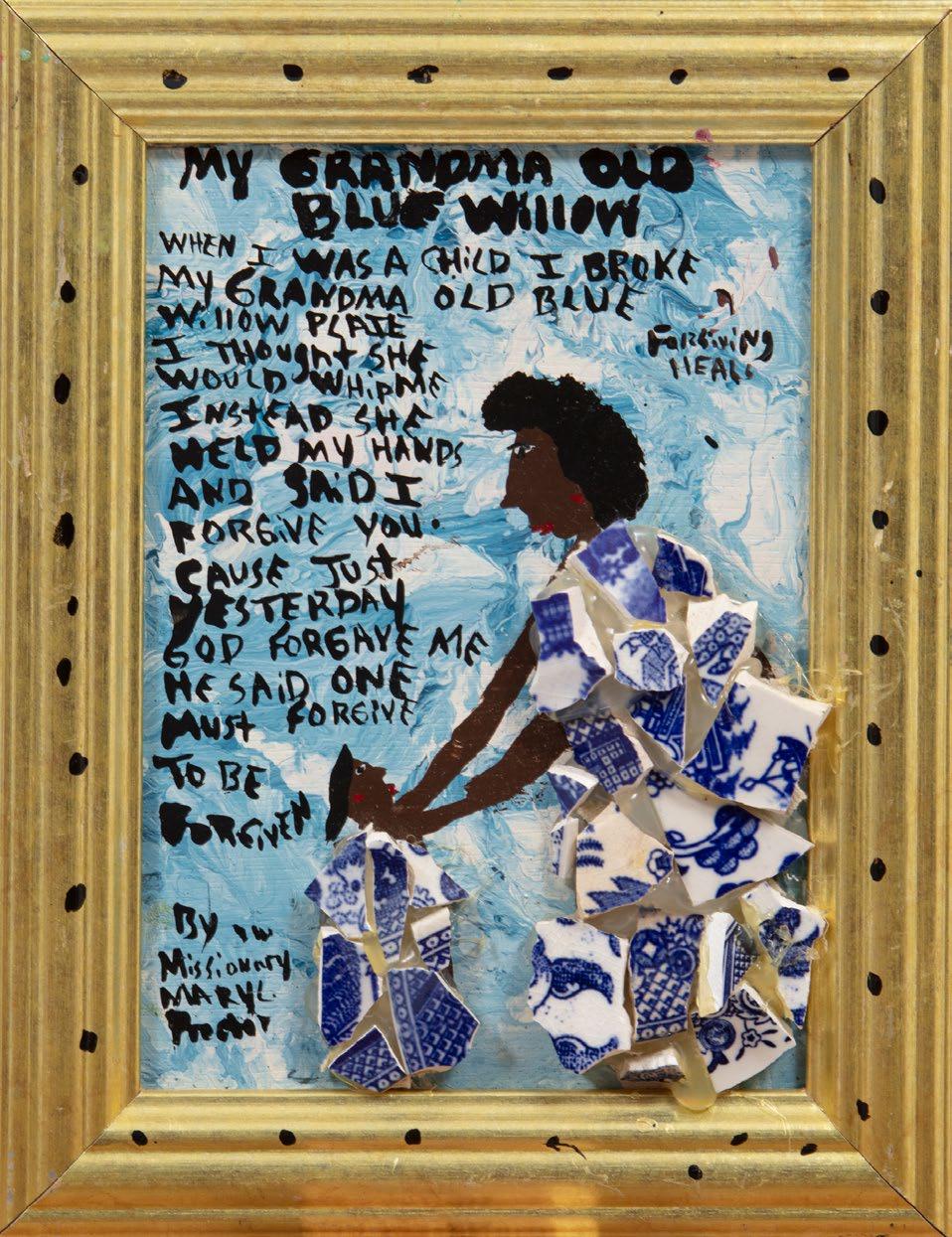
Note: Born in Benton, Louisiana in 1934, Thelma Lynn Simmons attended Louisiana Tech, Bossier Community College, the University of Houston and the Glassell Museum of Fine Arts School. Simmons raised three children in Haughton, Louisiana and was a full-time bus driver and substitute teacher in Bossier Parish; however, she also tended to her love of art by studying with artist Louis Sicard, Jr. Simmons moved to Houston, Texas from 1972 to 1982 where she received two certificates from The Museum of Fine Arts Houston. While residing there, she participated in several solo and group exhibitions, one of which traveled to New York City.
In 1985, she was invited to show some of her work in Paris, where she initially intended to spend only two weeks. Instead, she purchased a home and stayed for over two years. Simmons returned to Louisiana in 1988 where she taught art in Caddo Parish, Bossier Parish public schools, Centenary College, Louisiana State University Shreveport and Bossier Parish Community College. Bright, saturated colors typify Simmons’ works, and the expressive brushstrokes she employed provide a strong sense of movement. Her often-haunting subjects hint at the artist’s spiritual journey with a strong sense of narrative and arresting emotion.

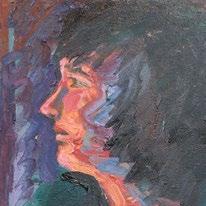


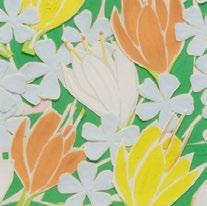

Note: Ann Cooper was born and raised in New Orleans and graduated from Metairie Park Country Day School and Newcomb College where she studied under Pat Trivigno and George Rickey. Cooper’s art is vibrant, dynamic and evokes a feeling of simplicity and charm. Her bold planes of color lend a modernist perspective to her often traditional subjects, while patterns and subtle texture enliven the surfaces. Cooper has been the subject of over forty one-woman shows and is represented in numerous private and museum collections, both in Louisiana where she is fondly remembered and nationally.



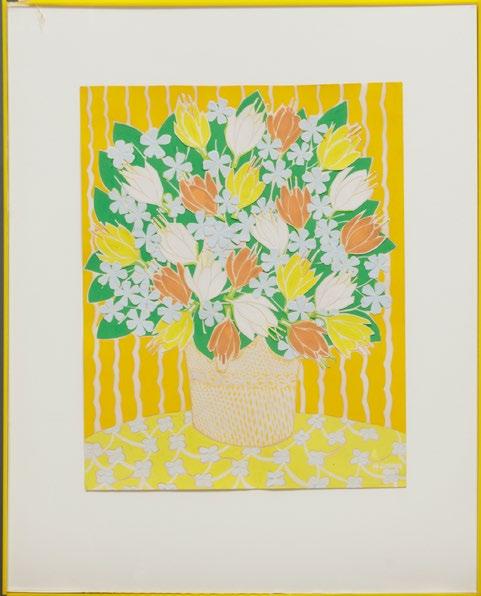
Note: Gretchen Rothschild Eppling was born in 1940 in New Orleans. The daughter of local artists, Charles and Vera Reinike, she grew up surrounded by art and was never wanting for various art supplies. Summers in Louisiana meant trips to her parents’ summer art camp in Saint Francisville where she flourished. She decided to major in art at Barat College in Chicago and met her first husband Herbert Rothschild, whom she followed to Harvard and Yale for his academic pursuits. Herbert later accepted a position at Louisiana State University, and thus Gretchen returned to her home state where she taught art at a local elementary school and eventually began exhibiting her work at The Baton Rouge Gallery, as well as in New Orleans at the Reinike Gallery.



Following the end of her marriage to Herbert, Gretchen moved back to New Orleans in the 1980s where she continued to volunteer and teach art to children. It was there she reignited a relationship with an old flame, high school sweetheart Irvington Eppling, whom she later married. Irvington admired Gretchen’s creative ambitions, and she pursued a new artistic path with his enthusiastic support. While Irvington has since passed, Gretchen continues to paint and exhibit her work at the Reinike Gallery, continuing the proud tradition of her talented family. Ref.: “Gretchen Eppling.” Reinike Gallery. www.reinikegallery.com. Accessed Mar. 4, 2023.

Note: When Allison Stewart began the undergraduate biology program at Spring Hill College in Mobile, Alabama, she did not know that she would eventually become a professional artist. Though the arts and sciences are often positioned in opposition with one another in academia, Stewart’s background in both fields and her training as a biologist provide her with a unique skillset as an artist. Throughout her forty-year art career, Stewart has created a large, evolving oeuvre that continues to explore environmental issues, particularly ones that involve the Louisiana coastline. In writing about her work, Peter Frank summed it thusly: “Stewart’s painting inhere so much of their sources’ natural vitality that they are charged with an energy that
Note: Born in Ville Platt, Louisiana and later residing in St. Martinville, Louise Guidry began creating art in childhood, although she did not have any formal training. It would not be until she was thirty years old that she began to paint in earnest. In addition to teaching elementary school for thirty years, Guidry also taught art to children and adults while raising her own family. Once her children were grown, she attended the University of Louisiana at Lafayette and received a Bachelor of Fine Art degree at the age of fifty-eight. She also followed a passion to travel the world, and she has been creating ever since.
Guidry has said that early in her career much of her inspiration came from nature. Even as she moved more toward abstraction, she still drew heavily on the outdoors and her many travels. Her works are filled with texture and saturated color, and she has won numerous awards and seen her work exhibited worldwide.
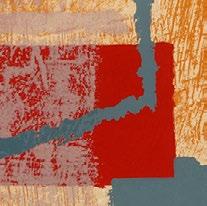
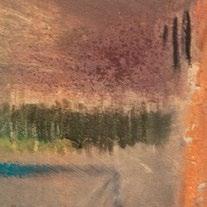

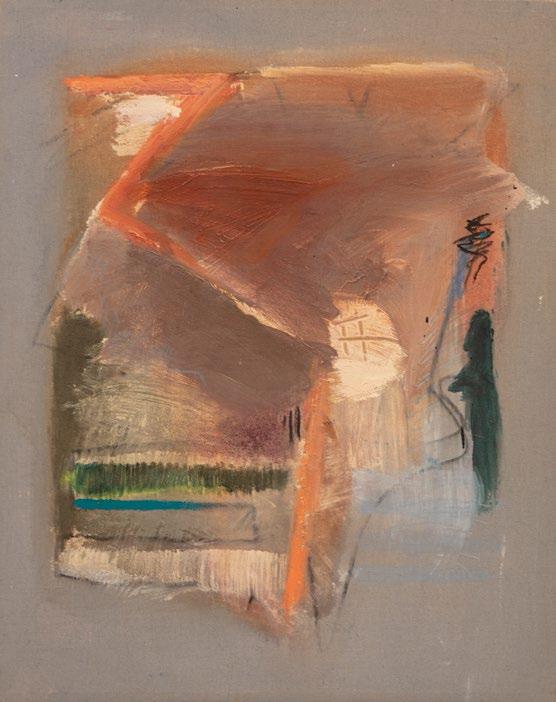
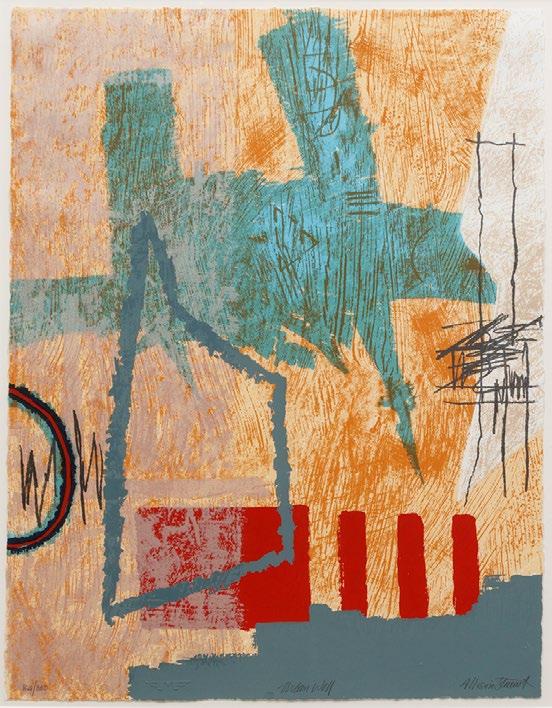
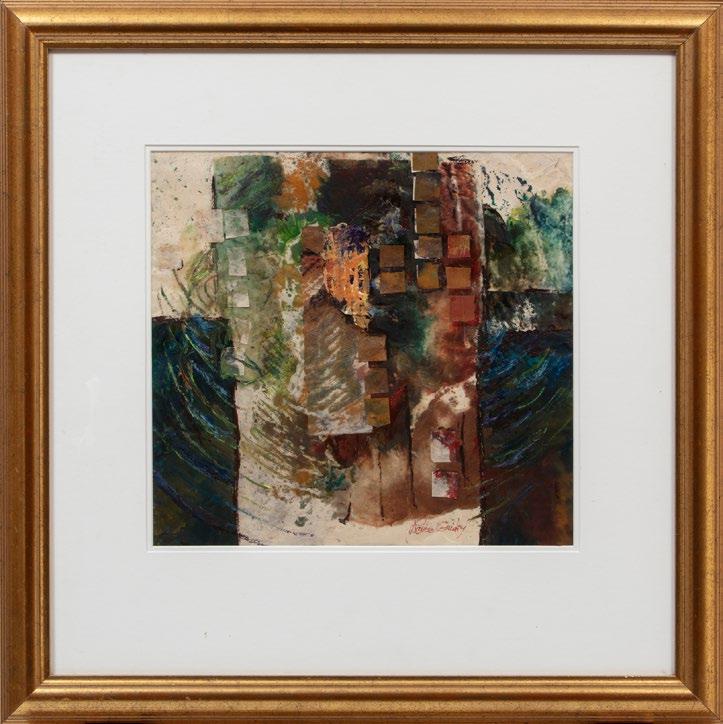
bridges the real and painted. There is finally no distinction between those two states – a condition many organic abstractionists seek but only a few achieve as regularly, and as deftly.”
Stewart is an active member of the New Orleans arts community. In 1998, Stewart and her husband, fellow artist Campbell Hutchinson, created Louisiana non-profit KIDsmART. This program emphasizes improving arts education in Louisiana schools and aims to make art education a more integral aspect of a child’s learning.
Ref.: “About.” Allison Stewart. www.allisonstewart.com. Accessed Mar 6, 2023.

Note: New Orleans experienced an exciting revitalization of its art scene in the 1980s and 1990s driven by a group of talented artists, gallery owners and art critics. The renovation and development of the Warehouse District in downtown New Orleans for the 1984 World’s Fair resulted in a group of forward-thinking gallery owners relocating their galleries or establishing new ones on and around Julia Street. Monthly openings were coordinated with the nearby Contemporary Arts Center to provide an exhibition arena and to entice collectors.
After retiring as a bookkeeper at a local tax service, Adelle Badeaux, initially an enthusiastic collector, focused her time and energy on creating art and participating in the art community. She faithfully attended openings, creating lasting friendships with many of the artists including Jacqueline Bishop, Douglas Bourgeois, Georges Febres and Martin Laborde. Largely self-taught, Badeaux’s works, which frequently contained biting political and satirical points of view, were exhibited in group shows at the New Orleans Museum of Art, the Contemporary Arts Center and the Arts Council of New Orleans, and she was represented by Heriard-Ciminio Gallery.
Note: Suzanne Schweig Langsdorf was known as “Martyl,” a name given to her by her artist-mother, Aimee Goldstone Schweig, for her daughter to use as an artist signature. She was born and raised in St. Louis, and her natural talents combined with the tutelage of her mother, led to early recognition as a child artist. Langsdorf graduated from Mary Institute in St. Louis and enrolled in Washington University where she studied art and history. From 1940 to 1941, Langsdorf went to Colorado Springs where she studied at the Fine Arts Center with Boardman Robinson and Arnold Blanch. Langsdorf traveled widely throughout her life, often with her mother, in search of inspiration. She was a Works Progress Administration muralist, and two of her murals are in post offices, one titled “Wheat Workers” in Russell, Kansas, and the other, “La Guignolee,” in Ste. Genevieve, Missouri. Another mural, “The Courageous Act of Cyrus Tiffany,” completed in 1943, is in the Building of the Recorder of Deeds in Washington, D.C.
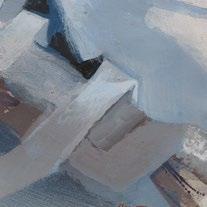
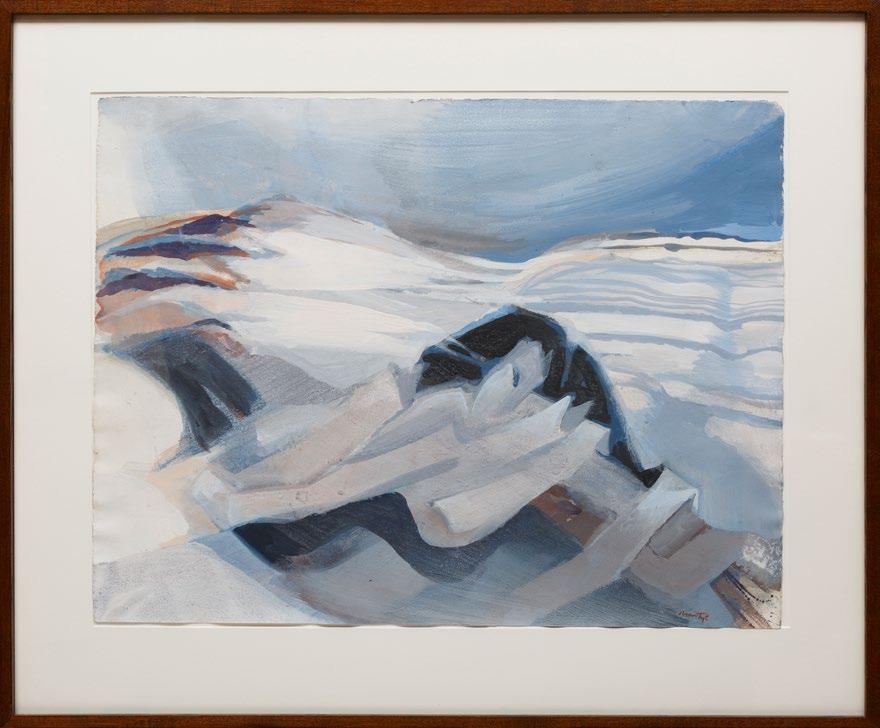
From 1945 to 1972, Langsdorf was art editor of the Bulletin of the Atomic Scientists, founded in part by her nuclear physicist husband, and in 1947, she created the Doomsday Clock image for their first magazine cover. She thought a clock, set at seven minutes to midnight, would convey “a sense of urgency.” The Doomsday Clock illustration was the only magazine cover she ever created. Both before and after that famous project, she specialized in ethereal, plein-air landscapes, both realist and abstract, which have been widely exhibited and collected by museums across the country.
Ref.: Yardley, William. “Martyl Langsdorf, Doomsday Clock Designer, Dies at 96.” New York Times. Apr. 10, 2013. www.nytimes. com. Accessed Mar. 4, 2023; “Langsdorf (Martyl), Suzanne Schweig.” McCaughen & Burr Fine Arts. www.mccaughenandburr. com. Accessed Mar. 4, 2023.

Note: Barbara Lion was born in New Orleans in 1945. She graduated from Mount Carmel Academy in 1963 and then pursued a degree from the University of Southwestern Louisiana (now University of Louisiana at Lafayette) in art despite her initial intention of majoring in graphic design. At ULL, her naturally curious disposition led her to experiment with a variety of media, and she took classes in painting, sculpture, art history, filmmaking and photography. Lion continued her studies at Louisiana State University in Baton Rouge, where she earned a master’s degree in art history, and shortly thereafter she worked at the Baton Rouge Gallery where she met her future husband, artist Robert Warrens.
Lion herself did not start painting professionally until 1974. A bold and independent thinker, she referred to her time in Catholic school and her rejection of the strict religious experience, “…that I didn’t fulfill the nuns’ expectations makes me more rebellious as an artist, gives me pleasure in chance-taking and recklessness.” A diagnosis of multiple sclerosis marked a pivoting point for Lion who adapted her artistic style to her illness. As a result, according to Roger Green, “her art became of necessity increasingly experimental and loose.”
While Robert Warrens went on to achieve well-deserved acclaim for his impressive body of work, Lion’s contribution to the local art scene remained in the shadows. Tragically, she eventually succumbed to complications from her multiple sclerosis in 1998 at the young age of fifty-three, leaving behind a body of work that has yet to take center stage.
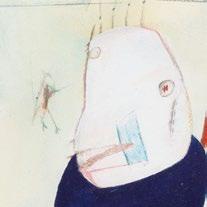
Ref.: Green, Roger. “Husband and Wife Team Explore Unique Facets of Their Environment.” Times-Picayune. July 9, 1989; “Barbara Ann

“Perhaps it is a little too early to say that [Durieux] is a modern Goya, but whether this is a prophecy or exaggeration, it proves what an impact her work has made.” - Harry Salpeter
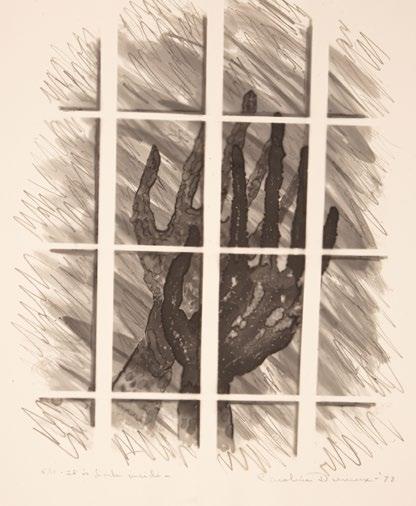

Note: Caroline Durieux showed artistic promise early in life at the young age of six. Her parents recognized her potential and had her tutored by Newcomb art teacher Mary Butler while still in middle school. Durieux inherited a “strong independent streak” from her mother and insisted on pursuing higher education at a time when women were not expected or encouraged to continue their studies.
At Newcomb College, under the tutelage of Ellsworth Woodward, her strong will and steadfast confidence often led to friction with the great artist. “[H]e expected his students to copy his work exactly. This didn’t sit well with me.” Nevertheless, she later cited Woodward’s grueling drawing classes as giving her a firm foundation in art, and she insisted that her students learn the same method decades later while teaching at Louisiana State University. At the time of her graduation from Newcomb, rather than making her debut, Durieux convinced her parents to fund tIn marfhhe furthering of her education at the Pennsylvania Academy of Fine Arts.
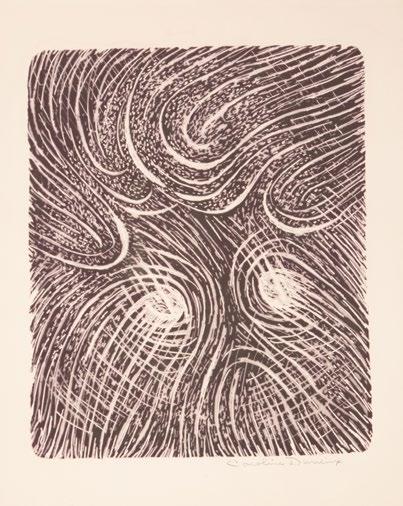
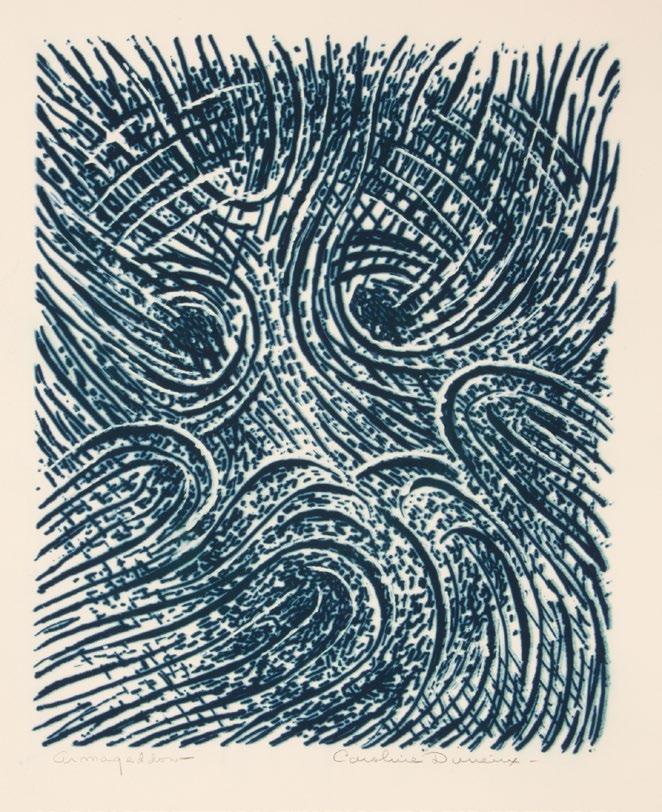
After her return to New Orleans and subsequent marriage, she traveled throughout Cuba and Latin America with her husband and settled in Mexico City, where her creative energy blossomed. Durieux’s dark humor in her artwork caught the attention of Diego Rivera and Frida Kahlo with whom she remained lifelong friends. The rebellious spirit of Mexico in the 1920s and 1930s as well as the egalitarian and revolutionary style of the two famous artists are often cited as primary influences for Durieux in finding her voice and solidifying her satirical take on society. Her time in Mexico is also where she discovered her preferred medium - lithography. Studying with the printmaker Emilio Amero at his studio in Mexico City she found the process allowed her to merge her love of drawing with her humorous and sardonic style to great effect. Her return to America in the late 1930s marked the beginning of an impressive succession of accomplishments from illustrating books by Lyle Saxon and serving as director of the Federal Art Project for the district of New Orleans (which under her leadership was the only de-segregated Works Progress Administration district in the state) to spearheading a traveling modern art exhibition throughout Latin America sponsored by the Museum of Modern Art, New York. Durieux eventually landed two teaching jobs, one at Newcomb College and the other at Louisiana State University, the latter at which she remained for twenty-one years.
While at LSU, her curiosity and innovative spirit led to advances in the world of printmaking in her creation of the first color cliché-verre prints and invention of a new printing technique called electron printing. The new method was created while working with the LSU Nuclear Science and Biosciences departments and involved drawing with ink infused with radioactive isotopes, pressing the drawing to photo paper and allowing the isotope decay to form the image. Her contributions to regional art history are innumerable, and her lasting inspiration can be glimpsed in the bodies of work of artists such as Robert Gordy, George Dureau and Elemore Morgan, Jr. Ref.: Retif, Earl. “Caroline Wogan Durieux A True Original”. Stone + Press. www.stoneandpressgallery.com. Accessed Mar. 3, 2023.
and inscribed “artist
lower right, sheet 19 3/4 in. x 15 7/8 in.,
Note: Mary Abbott helped to develop Abstract Expressionism as part of the New York School in the 1940s and 1950s and is recognized as one of the prominent members of the group. Despite painting alongside and having friends in the highest circle of the movement, her work has often been overlooked in favor of her famous contemporaries such as Jackson Pollock, Mark Rothko, Barnett Newman and Willem de Kooning. Abbott’s family were members of New York’s social elite. They were descendants of President John Adams and close friends with the Roosevelts. She was a socialite in the early 1940s and had a brief modeling career with cover photos in Vogue, Harper’s Bazaar and Glamour. At the age of nine, Abbott battled a severe infection and pneumonia that forced her to stay inside for nearly two years, during which time she discovered a love for visual art. While modelling, she enrolled in the Art Students League of New York and took classes at the Corcoran Museum School in Washington, D.C. Originally drawn to landscapes and painting in nature, Abbott took after her namesake aunt, Mary Ogden Abbott, who was a sculptor, explorer and landscape painter. Between her aunt and mother, who was a poet, the artistic women in her life influenced her to pursue a career as an artist.

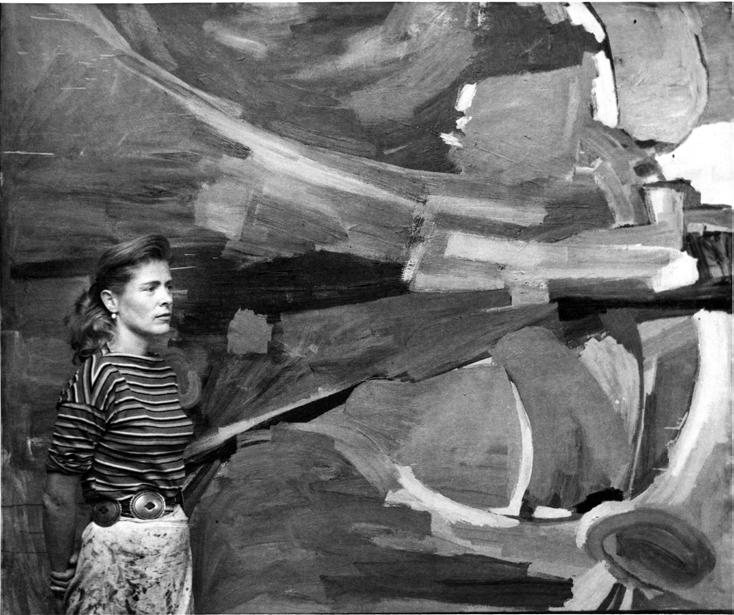
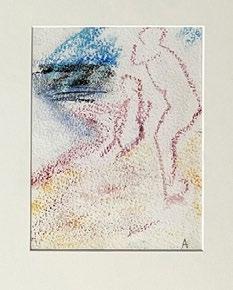

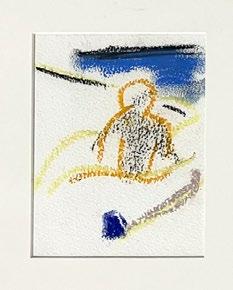
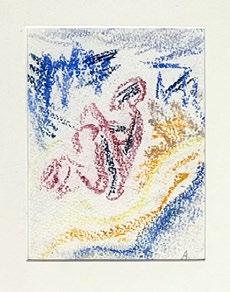




After a brief marriage, Abbott moved downtown and became a fixture within the inner circles of the Abstract Expressionist movement, one of the few women members of the unofficial club that met at New York’s Cedar Street Tavern. She was drawn to abstraction and has said of the shift: “It just hit me. I just liked it. Trying to do things representationally didn’t work for me. [With abstraction] I could talk in a different way.” After her marriage to her second husband in 1950, she began spending summers in Haiti and the Virgin Islands, where the environmental surroundings inspired her work greatly and led to a flourishing period in her painting. Throughout the 1950s, she continued to show her work in galleries internationally. In 1966, Abbott and her husband divorced, and she spent most of the 1970s teaching at the University of Minnesota. She eventually moved back to New York where she lived until her death. Abbott’s pioneering artistic legacy is a rich one and only recently receiving the scholarly recognition it deserves.
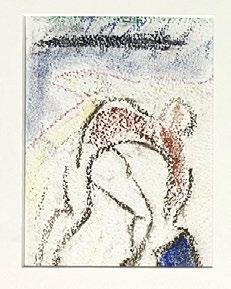
Note: Originally from Eunice, Louisiana, Ward moved to New Orleans at the age of seventeen. She worked as a registered nurse, eventually married Dr. Simon Ward and began taking classes at Newcomb Art School. In the late 1940s, her marriage deteriorated, and Ward fled New Orleans to follow her creative dreams. She enrolled at Black Mountain College to hone her skills and learn from some of the greatest and most innovative artists of the time. She befriended and worked alongside numerous soon to be world-renowned artists and intellectuals, including the formidable and highly admired art critic, Clement Greenberg, who became a close confidant. She continued her studies at the IIT Institute of Design in Chicago and eventually landed in New York in 1955.
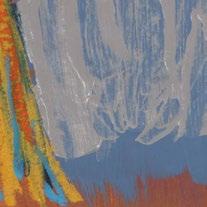


New York at the time was the bustling apex of the contemporary art movement, and Ward had no trouble finding a place for herself, inevitably making friends with the city’s greats such Helen Frankenthaler, Robert Frost and the aforementioned Greenberg. Ward often remained behind the scenes and behind the camera at gallery openings, documenting her influential friends in attendance through her photography. The enigmatic Ward was at the center of the dynamic 1960s New York art scene and surrounded herself with the most successful luminaries of the day, many of whom whose work would later grace the most hallowed of museum walls. A passionate artist in her own right, Ward’s works stylistically followed those of her more famous cohorts with an aesthetic all her own, evident in her many experiments with a variety of media. Her role within the group, while long forgotten and much overlooked, is nonetheless incredibly significant in a realm boasting of few women. While the art world at the time was relegated primarily to men, they found their equal in Ward.
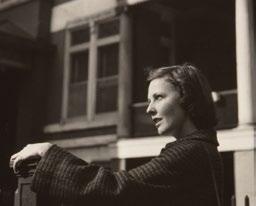
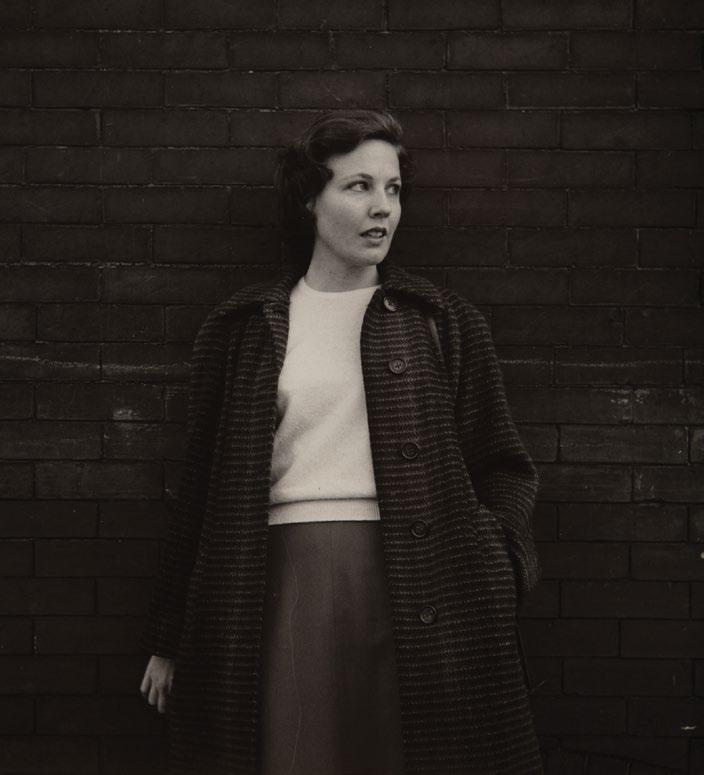

In March of 2021, Garden and Gun published an extensive profile of Ward written by John Ed Bradley. Through Bradley’s careful research, Ward’s place among her contemporaries was finally cemented.
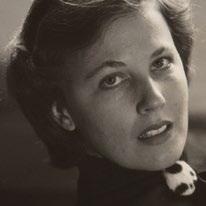
Ref.: Bradley, John Ed. “Unearthing the Art of Cora Kelley Ward”. Garden and Gun Feb./Mar., 2021. www.gardenandgun.com. Accessed Mar. 1, 2023.

“There are no words to describe this feeling of wholeness which blooms in me… of being open to what is before me in great painting and drawing and sculpture.” – Cora Kelley WardPhotos Harry Morey Callahan
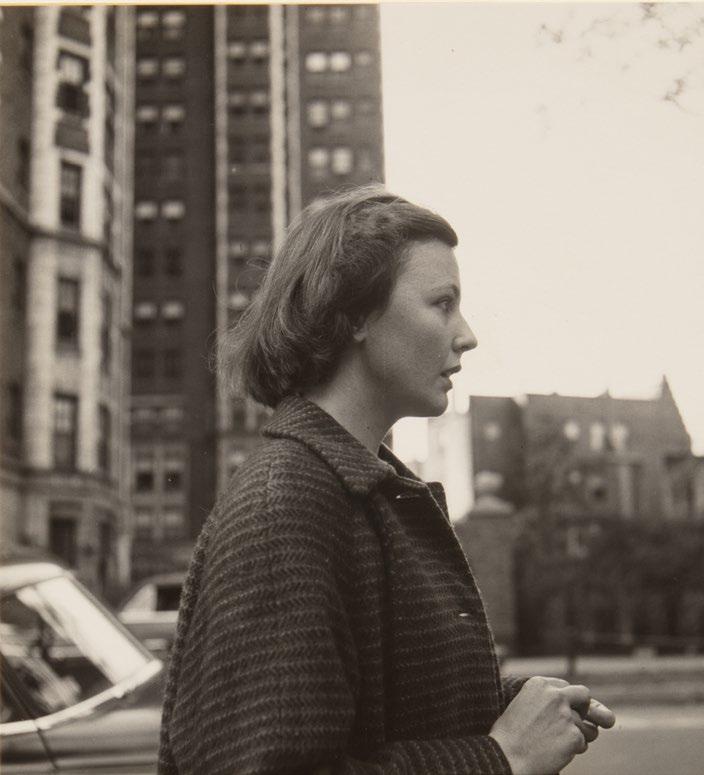

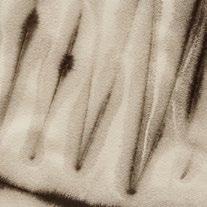

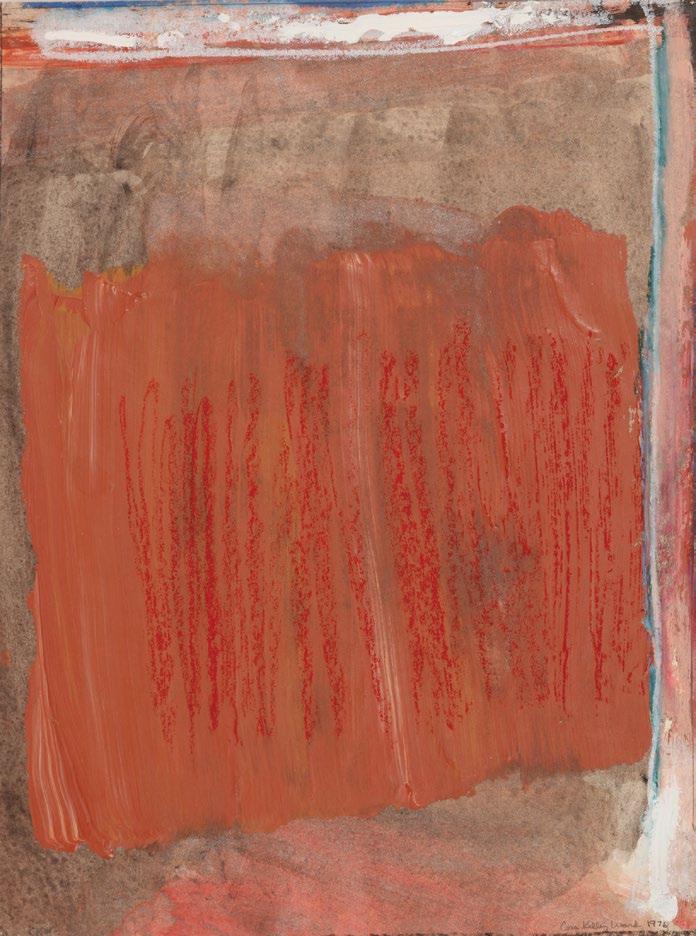
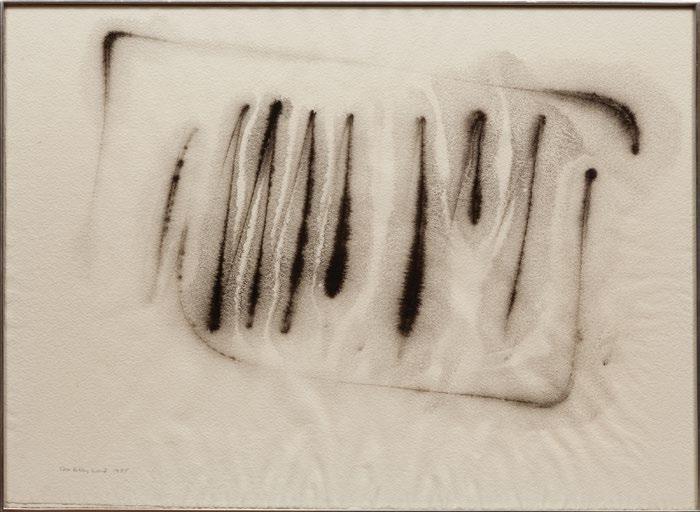
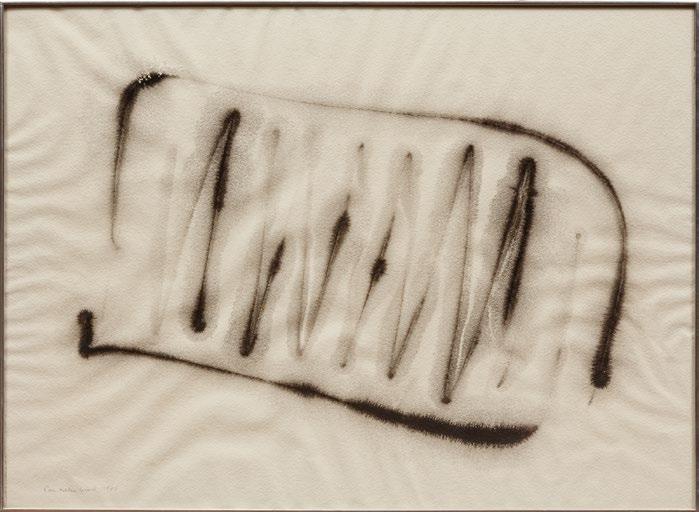
Note: Born in New York City, Beth Ames Swartz attended the High School of Music and Art and Cornell University. She also earned a master’s degree from New York University. Swartz moved to Arizona in 1959 and had a profound experience that changed the course of her artistic career. While on a rafting trip on the Colorado River, the colors and shapes of the area began to awaken in her a sense of connectedness with the Earth - that the Earth was feminine and what it meant to be feminine in the world. Swartz had been introduced to action painting and was making the transition to becoming an abstract artist. With this experience in mind, she began to work on incorporating elements into abstract art that she thought had been missing - louder female voices and a true philosophy of inclusion. Drawing inspiration from Betty Friedan’s The Feminine Mystique and Carol Christ’s Diving Deep and Surfacing along with the artworks of Wassily Kandinsky and Mark Rothko, she aimed to invoke the history of female empowerment and add feminine discourse to her paintings. The imbalance that exists between the masculine and the feminine in modern culture and restoring that balance became a key element of her work.

Swartz found resonance of her beliefs while studying various philosophical ideas and world religions, specifically Carl Jung, the Cabala, Buddhism, the Shen Qi and various Native American cultures. Her process became more about “…communication with viewers on both a conscious and an unconscious level” and using the commonalities of philosophy and religion to form a spiritual bond that all people would recognize. Her body of work does have visual elements that unify it, including electric color fields influenced by Arizona, rich textures, collage, impasto and the use of written words. However, concept and inspiration link her work more than a single visual style. In referring to her art specifically she notes: “Connections…connections between faith and art…connections with Mother Earth… I focus on art’s potential for unifying people, helping us recognize the commonality of human experience.” Swartz’ work has been the subject of numerous one-woman shows dating to 1981 and is included in important private and public collections.
Ref.: Alami, Emani. “Reviving the Divine Feminine with Beth Ames Swartz.” Patheos. www.patheos.com. Aug. 4, 2022. Accessed Mar. 3, 2023.
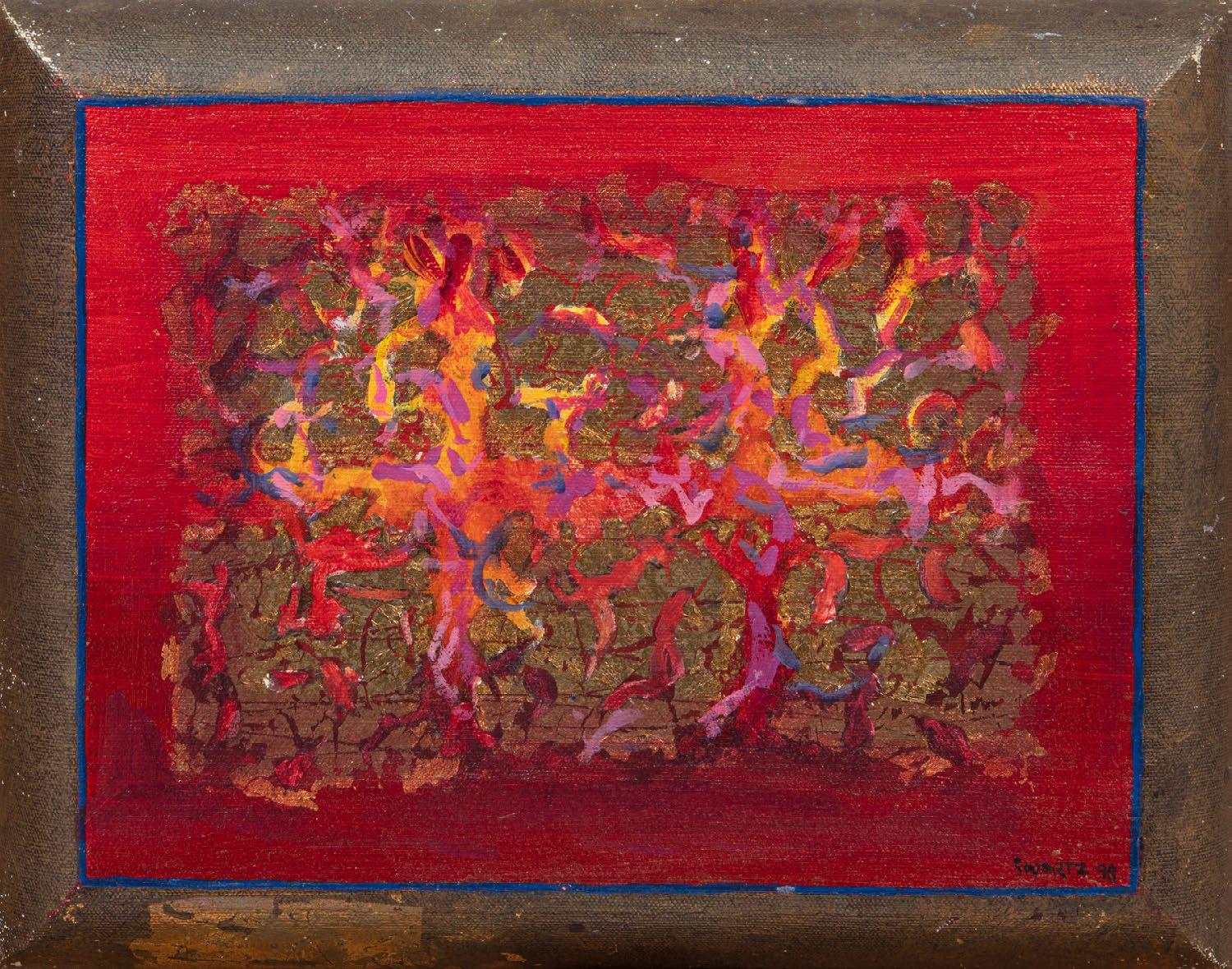
Note: Born in New York City, Lin Emery first moved to New Orleans in the 1940s and spent much of her adult life in the city, where she was an integral part of the city’s art scene for over six decades. In the late 1940s, she traveled to Europe where she studied figure drawing at la Grande Chaumière in the Montparnasse arts district of Paris and visited New Mexico, where she exhibited paintings at the Harwood Museum in Taos. In 1949, a return trip to Paris marked the inauguration of Lin Emery – the sculptor – and the narrative of her work from the static to the animated is a compelling one. Inspired by her mentor, Ossip Zadkine and the Romanesque works in the Musée de l’homme, Emery incorporated the aesthetics and ideologies of both into her early religious works. Back in her adopted home of New Orleans in 1951 as a studio assistant to Enrique Alferez, she was approached by the Father Judge Mission Seminary to create a series of sculptures for their church in Virginia. The resulting works are elongated and elegant figures representing familiar religious characters. In 1952, Emery attended the Sculpture Center in New York and learn how to weld and cast metal. Her main influence was Seymour Lipton and his textured welded forms. With metal being her newfound medium of choice, Emery focused her efforts on making it move. Inspired by the small, fortuitous incident of witnessing a drop of water hit a spoon and make it rock in her kitchen sink, Emery concentrated on building moving water forms she dubbed “aquamobiles.” These would be her first foray into kinetic sculpture. In 1965, Emery began experimenting with magnets,
which she would hide in both the individual elements of her works and in the hidden motorized base, the rotation of which would cause sporadic, undulating movements. While the “aquamobiles” and “magnetmobiles” were effective in their capacity to convey a certain vitality, they would prove too constraining in their reliance on electricity and pumps. It was her 1977 discovery and subsequent usage of ball bearings in her works that would transform the way her iconic sculptures move, giving them a freedom and autonomy that was unattainable previously. With this new lightness in articulation, she took to the wind, which would prove her most reliable source of movement.
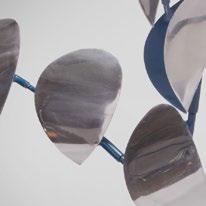
Emery achieved international acclaim for her sculpture. A feature in Art in America in 1955 led to a traveling exhibition throughout museums in the South, and in 1956, Emery was a charter member of the Orleans Gallery, the city’s first collective artist-run contemporary art space. Her list of honors and exhibitions is extensive, including a retrospective at the New Orleans Museum of Art in 1996. Her works exude grace, motion and delicateness, all traits contrasting beautifully with the strength of the polished metal medium. Her public sculptures enhance the landscape of New Orleans and beyond and serve as a testament to the lasting impact of this pioneering female artist.
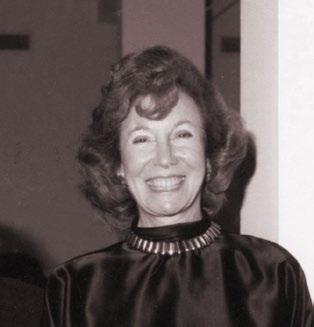
Ref.: Kemp, John R. Lin Emery. 64 Parishes. www.64parishes.org. Accessed Mar. 3, 2023; Palmedo, Philip F. Lin Emery. Manchester: Hudson Hills, 2011.
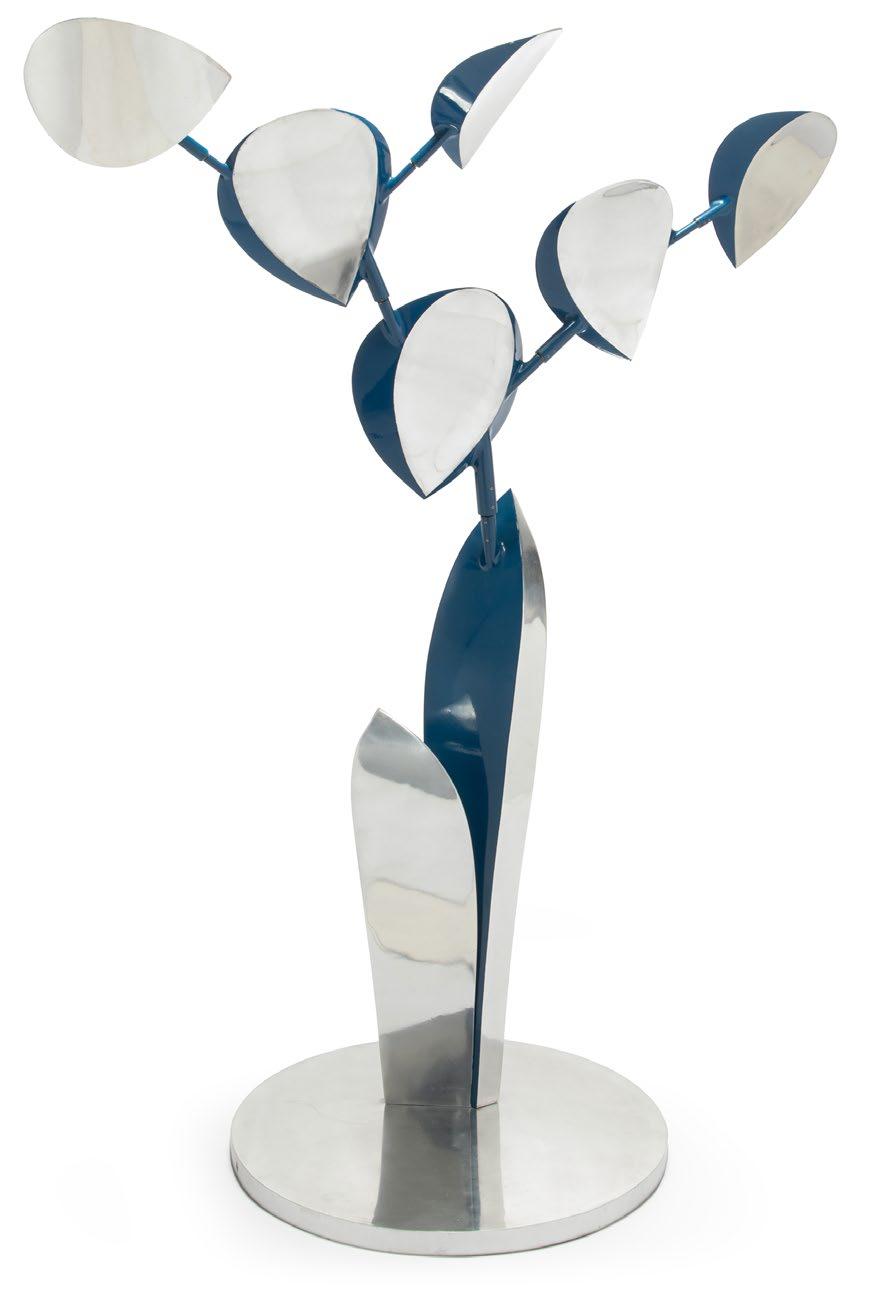
64. Ida Rittenberg Kohlmeyer (American/Louisiana, 1912-1997), “Semiotic 86-4”, 1986, mixed media on canvas, signed and dated lower left, “Moody Gallery, Houston, TX” label with title and date on stretcher, 36 1/4 in. x 49 in., framed, overall 37 in. x 50 in. x 1 1/2 in. [$20000/30000]
Provenance: Moody Gallery, Houston, TX, 1986.
Note: A native of New Orleans, Ida Kohlmeyer achieved international acclaim as an artist and developed her own unique perspective on abstract art. She is widely considered one of the most influential artists from Louisiana and the South, although her art career did not begin until later in life. Following graduation from Sophie Newcomb Memorial College at Tulane University in 1933, Kohlmeyer married and raised a family. Dissatisfied with what she called a “vapid, dilettante life,” she first joined the John McCrady Art School in 1947, and then began classes at Newcomb College under the tutelage of Pat Trivigno in 1950. She eventually pursued a master’s degree in fine arts, producing primarily figurative studies and representational work for her thesis. Following the completion of her degree in 1956, Kohlmeyer spent a formative summer at the art colony in Provincetown, Massachusetts studying under Hans Hofmann. Abstraction appealed to the Kohlmeyer, and she likened her sudden shift from representation to being freed from prison. The following year, Mark Rothko came to New Orleans in a visiting artist position at Tulane and moved his family into the Metairie home of Ida Kohlmeyer’s late mother. The resulting friendship between Kohlmeyer and Rothko would have a profound influence on the trajectory of her work.
By the 1970s, Kohlmeyer had transcended the influences of Hofmann and Rothko and moved entirely to non-objective subject matter. She developed her own code of schematic symbols, which she often arranged in a grid pattern. Her paintings are abstract, yet linguistic, and hint at the deep personal emotion behind them. While
the symbols present a pictographic code, their meaning remains elusive. In the vibrant painting of 1986 by offered here, the artist’s signature vocabulary of glyphs has broken free of the grid system she originally employed to float across the canvas in a cacophony of shapes and colors. The glyphs hint at familiar shapes, each undergoing a dimensional distortion that further adds to the overall feeling of movement and vitality. Semiotics, the study of signs and symbols, could not be more apropos as a title for this short-lived yet important series, and it acknowledges, as do many of Kohlmeyer’s titles (Cluster, Syntax, Rebus, and Synthesis) the dialogue of interpretation her canvases inspire with their viewers.
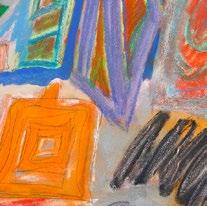

Throughout her active career, Kohlmeyer successfully exhibited her work in prestigious galleries and museum nationwide, with over one hundred solo exhibitions. She received the National Women’s Caucus for Art’s outstanding achievement award in 1980 and was the subject of her first major retrospective exhibition at the Mint Museum in Charlotte, North Carolina in 1983. Kohlmeyer can be considered a matriarch among American artists, as she broke the mold for southern artists and women artists alike during her lifetime. Her legacy is one of joyful, colorful paintings and a generation of female creators who follow in her footsteps.
Ref.: Plante, Michael. Ida Kohlmeyer: Systems of Color. New York: Hudson Hills Press, 2004; Kessler, Jane. Ida Kohlmeyer: Thirty Years. Charlotte, NC: The Mint Museum, 1983.
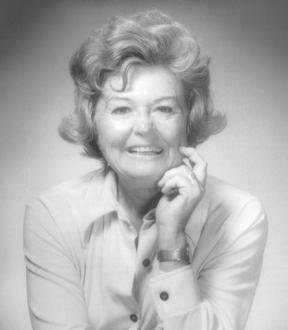
Note: New Iberia native Melissa Bonin started painting at the University of Louisiana in Lafayette at the age of fifteen at the insistence of local artist Elemore Morgan, Jr. who became her mentor and whose expressive landscapes inspired her in her subject matter and approach. At ULL, she also had the opportunity to study under Tom Secrest, Herman Mhire and William Moreland, all of whom she lists as influences for her body of work. After earning her Bachelor of Fine Arts in 1981, she travelled abroad to study art and French in Paris, Angers and the south of France. She furthered her studies upon her return to the United States at Bennington College and the Massachusetts School of Fine Art in Boston.
Bonin has achieved much recognition and many accolades for her work, receiving important commissions, such as a forty-eight-foot mural for the city of New Iberia, the Bunk Johnson award for Visual Arts, and an Atchafalaya Basin Foundation Grant. Her works are in many important private and public collections and have graced the walls of institutions such as the Ogden Museum of Southern Art, Knoxville Museum of Art, and the Bayou Teche Museum, among others.
Throughout her celebrated career, she has and continues to experiment with a multitude of media and is even a talented poet. Her paintings have evolved from her earlier abstract canvases featuring an experimental grid-like layout of colorful pastel squares to her more recent moody bayou landscapes.
A constant innovator who draws on her Cajun heritage as inspiration, Bonin has become an ambassador for Cajun culture and the state of Louisiana. With her adept brushstrokes, she is able to capture the timeless, luminous spirit of the bayou and its enduring beauty, symbolic of the resilience of the once violently displaced Cajun people. Her approach to creation is meditative, working in solitary silence and applying color to canvas instinctually and subconsciously. “Landscapes permit me to sit on the edge of abstraction and reality. You can manipulate colors in a way that produces a feeling of the landscape without copying everything realistically.”
Her landscapes capture every facet of the Louisiana Wetlands from the dramatically hazy, glowing bayou scenes for which she is primarily known, to her more recent bright, sundrenched explorations of duck weed suspended in a brilliantly reflective body of water.
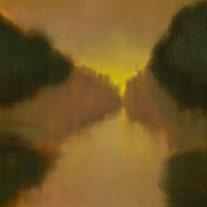
Ref.: Kemp, John R. Expressions of Place: The Contemporary Louisiana Landscape Jackson: University Press of Mississippi, 2016; Kemp, John R. “Melissa Bonin.” 64 Parishes. Sept. 12, 2012. www.64parishes.org. Accessed Mar. 6, 2023.
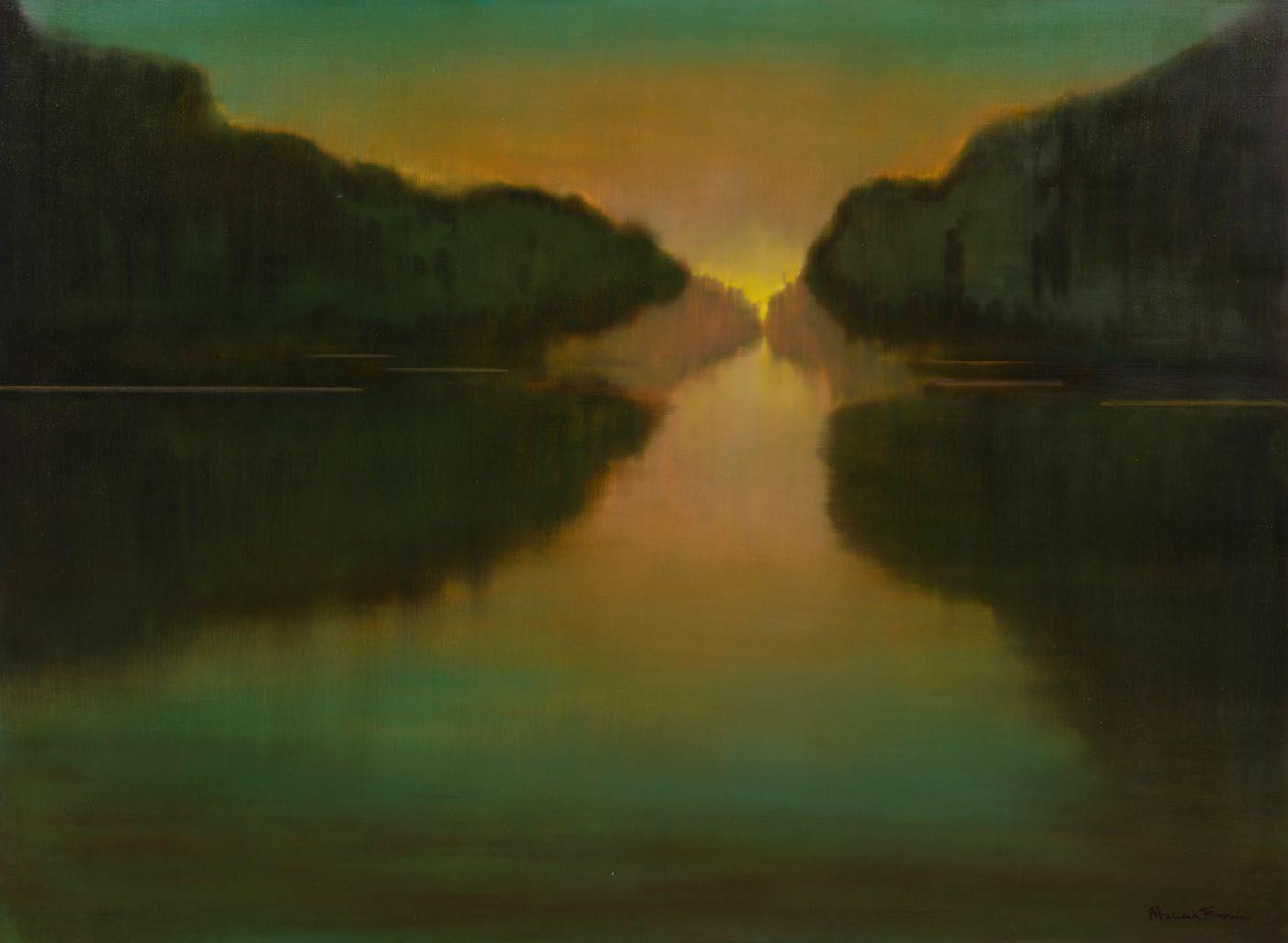
“When I go out on the water, something happens to me.
I feel an electricity, an energy.”
- Melissa Bonin

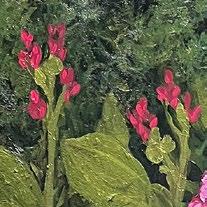
Note: Lorin Vieira has joined the ranks of talented women artists inspired by the landscape and inhabitants of her home state of Louisiana. While not formally trained in art, Vieira felt compelled to start painting in order to capture and honor the entrancing scenes of her surroundings. Her work in acrylic is developed with countless layers of color to capture the fleeting beauty of light. From the marsh to an urban garden, Vieira brings her unique vision to life on canvas. Her work also draws inspiration from Brazil, the home country of her husband, and her travels. Moody skies, deep shadows with saturated earth tones and glints of reflected sunshine are her hallmarks. Recently featured in three group exhibitions with likely many to follow, Vieira is represented by galleries based in New Orleans, Little Rock and Charleston.
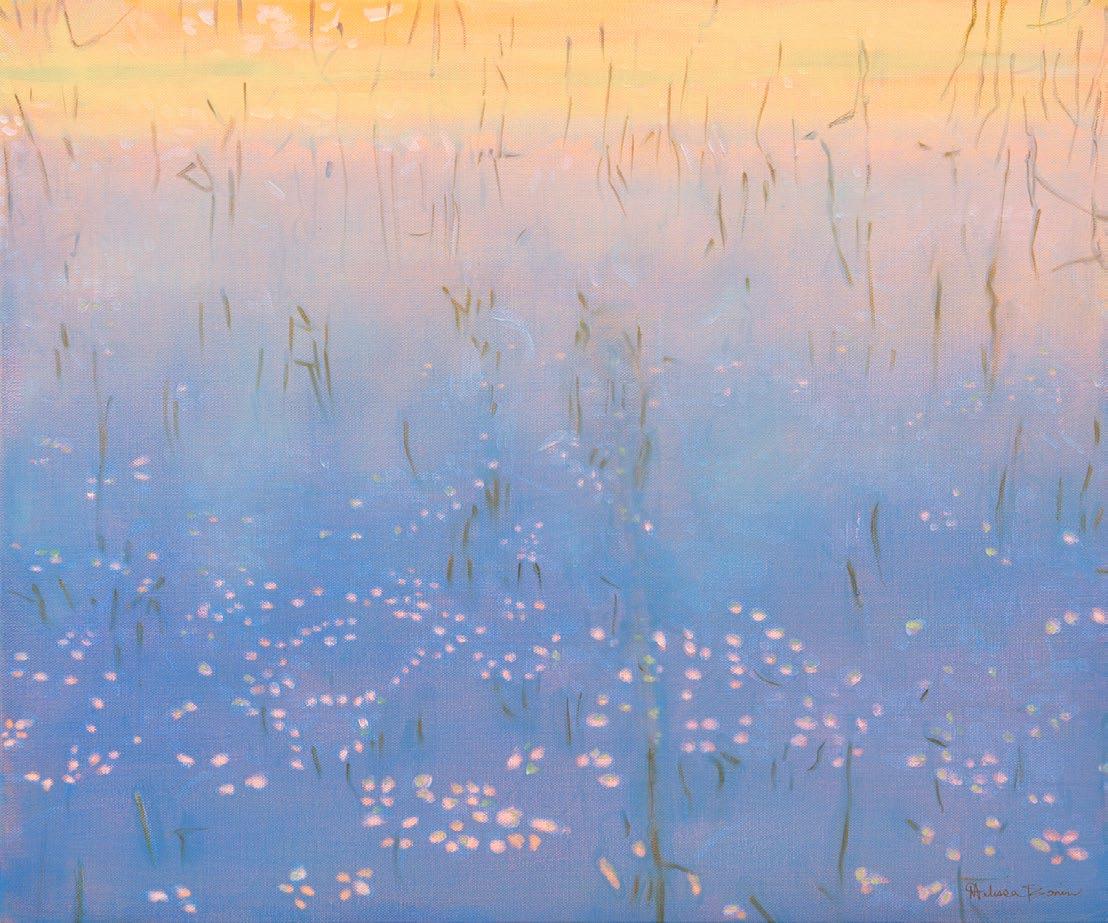
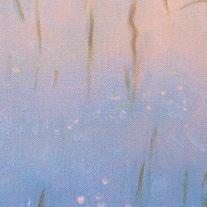

Note: Chris Roberts-Antieau had her first connection with art in her seventh-grade home economics class, where she encountered sewing and formed a lifelong love of working with fabric. Despite a lack of encouragement, she forged a path to the fashion world, where she made hand appliqué jackets and handbags for clients in New York City. Even though she was quite successful, the constraints of fulfilling orders and the manufacturing process ultimately proved too constricting to her creative side. She made the decision to put her work “under glass and not on bodies.”
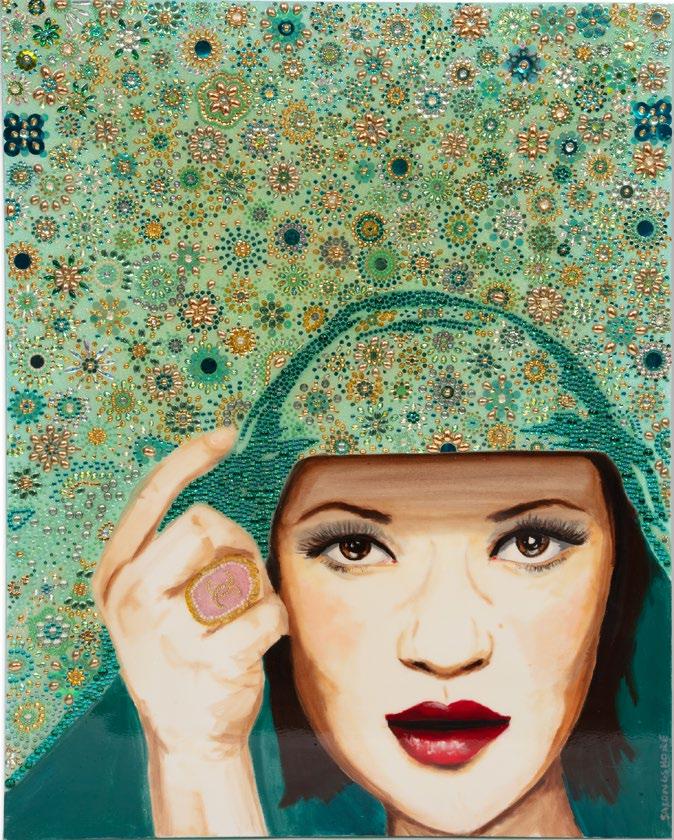
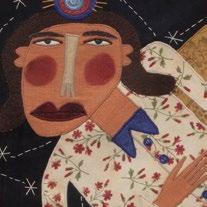
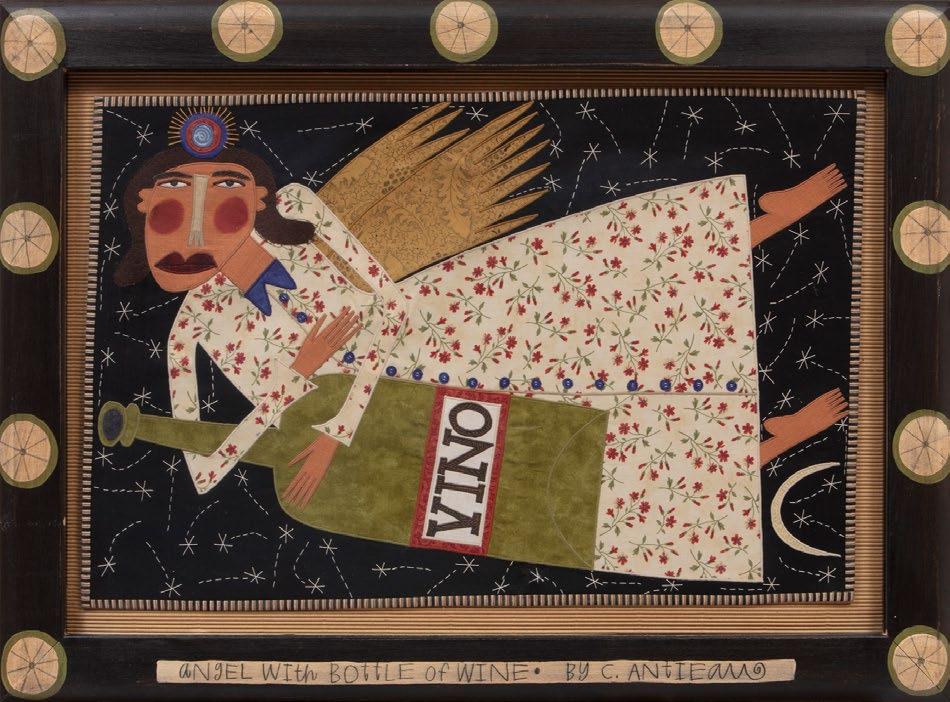
Roberts-Antieau utilizes a mixture of processes; fabric appliqué, thread painting and hand embroidery in a method she calls Fabric Painting, all done on a single Bernina sewing machine. This method is perfect for translating her unique and whimsical ideas into art, and her desire is to capture the “mysterious origins of joy.” In fact, that goal could be called her modus operandi: to find joy, experience it and spread it to others through art. Roberts-Antieau now owns galleries in Ann Arbor, Santa Fe and New Orleans and has works in museums and private collections all over the worldwonderful accomplishments for a woman with no formal art training who defied the odds and those who told her that she would never become an artist.
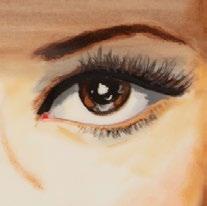
Note: Art world darling Ashley Longshore is a self-taught artist who has redefined Pop Art for a new generation through her strong feminist perspective. Born in Montgomery, Alabama, Longshore attended Brenau Academy in Gainesville, Georgia and earned a Bachelor of Arts in English literature from the University of Montana in Missoula. She began creating art early in life, discovering a true passion for painting while in college. Her career has skyrocketed over the last decade, with the artist making her first million in 2013. Longshore has created a body of work that challenges traditional modes of thought and an artist-based entrepreneurial business model that has led to an empire and multiple crossovers into fashion. With a bold and colorful palette mirroring the personality of the artist herself, Longshore enjoys exploring “American ambition from a female perspective.” Her canvases are packed to excess with vibrant, borderline brash imagery of pop culture often paired with eyebrow-raising phrases. Her resulting oeuvre is cheeky, whimsical, over the top and serves as an homage to American capitalism through the eyes of a female Pop Artist.
Ref.: MacCash, Doug. “A Pop Artist Who’s Not Always Popular, Brash and Energetic Ashley Longshore ‘ain’t no quitter.’” Times Picayune. Sept. 23, 2022. www.nola.com. Accessed Mar. 1, 2023; Studeman, Kristin Tice. “Meet Blake Lively’s Bestie and New Orleans’ Most Badass Artist, Ashley Longshore.” ELLE. Oct. 11, 2017. www.elle.com. Accessed Mar. 1, 2023.
Note: Born and raised on the South Side of Chicago, Kayla Mahaffey took the struggle in the world around her and the support from her community to evolve a unique and personal style that imbues her work with imagination, whimsy, positivity and the narrative of her own life story. Her works are best described as a mixture of pop art and Afro-surrealism and based around her childhood memories and the safety and comfort she felt in her younger years, particularly while watching cartoons. Mahaffey’s works have a depth of meaning and universal appeal that have led to her recent meteoric rise within the art world.
In the skilled hands of Mahaffey, popular culture imagery is re-purposed and re-invented. By combining immediately recognizable cartoon elements with images of Black children, she succeeds in carving out space for them, and herself, within the imaginative chaos. Her work is saturated in bubble gum and cotton candy colors and invites the viewer into the artist’s world, which is as sentimental and whimsical as it is deeply powerful. Ref.: Scott, Chadd. “Kayla Mahaffey Explores Nostalgia in New Paintings.” See Great Art. Sept. 17, 2021. www.seegreatart.art. Accessed Mar. 1, 2023; “Interview with Kayla Mahaffey for ‘Remember the Time.’” Sour Harvest. Sept. 21, 2021. www.sourharvest.com. Accessed Mar. 1, 2023; Mahaffey, Kayla. “About.” Kayla May. www.kaylamay.art. Accessed Mar. 1, 2023.

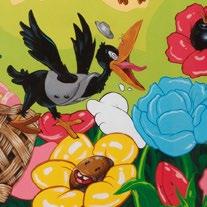
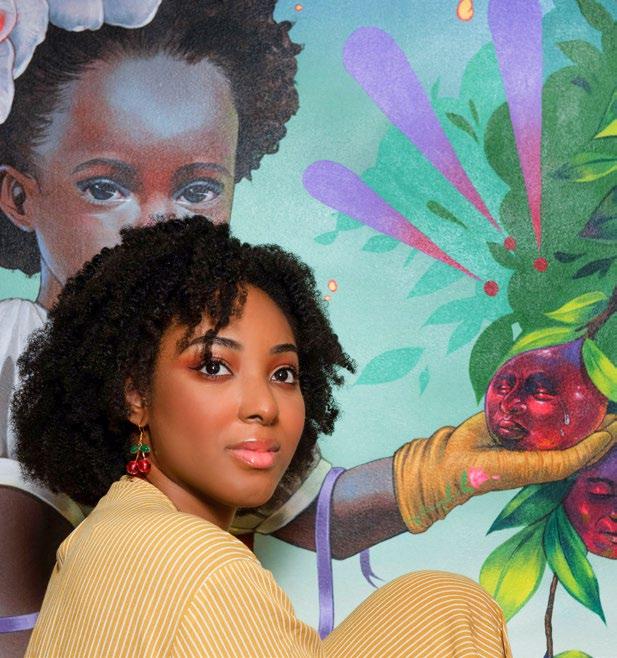

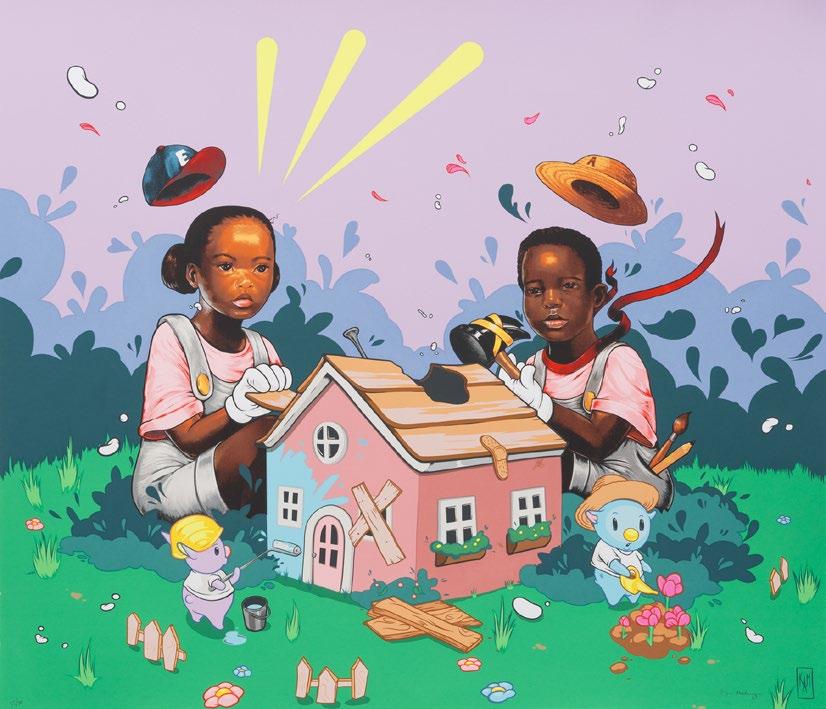

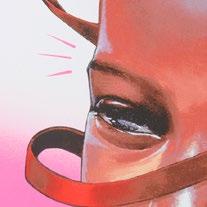
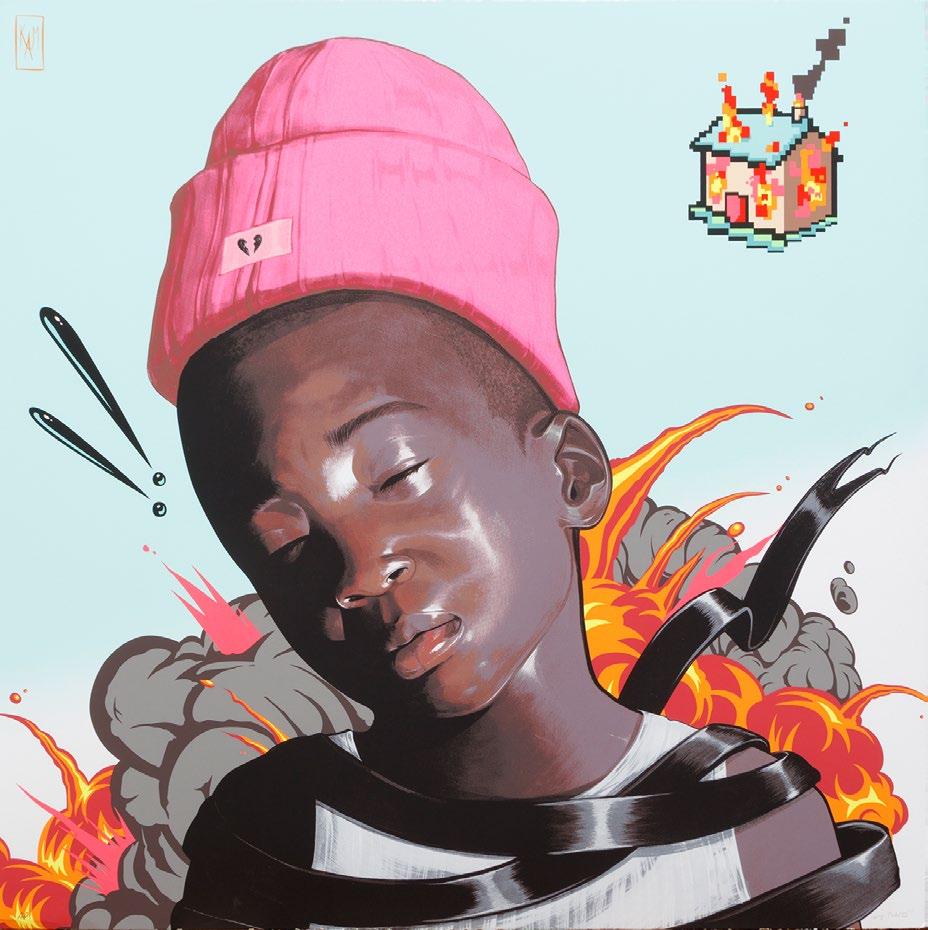

[$500/700]
Provenance: Galerie Simonne Stern, New Orleans, LA; Arthur Roger Gallery, New Orleans, LA.
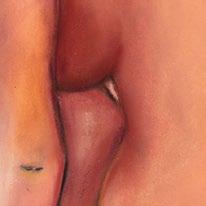
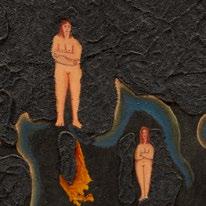
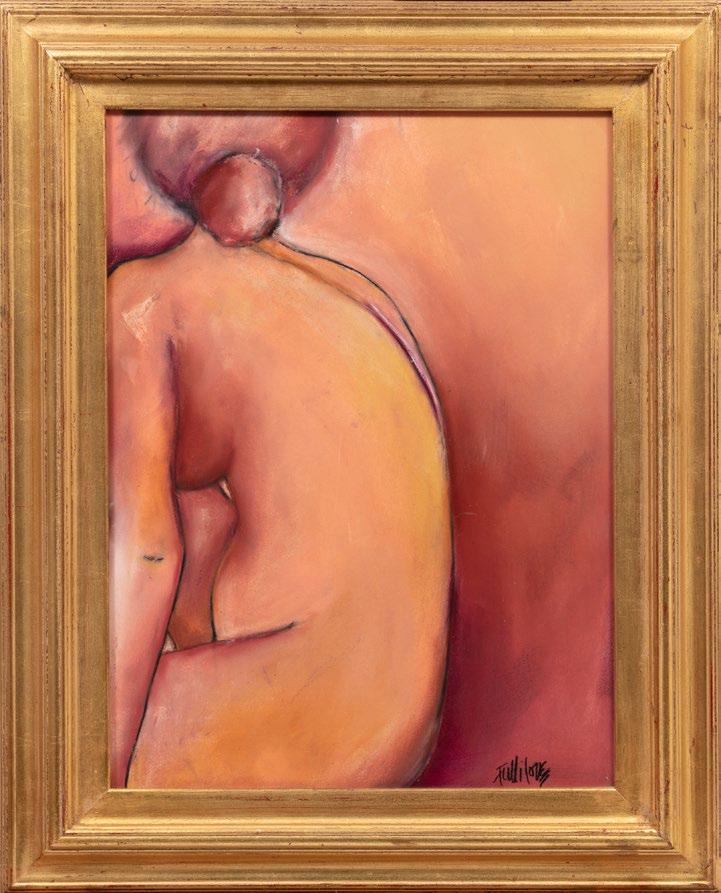
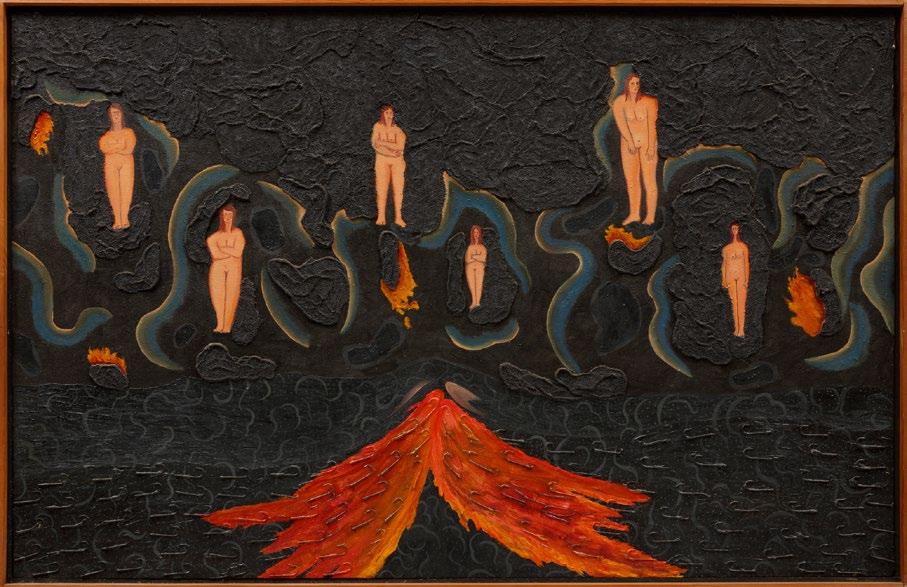
Note: Melody Guichet received her Bachelor of Fine Arts from Louisiana State University and her Master of Fine Arts from Temple University in Philadelphia. She returned to LSU as a faculty member, bringing with her a unique and collaborative approach to teaching. For example, she has enlisted the physics department to work with her students and assist them in painting their own interpretations of modern quantum physics. Guichet has received numerous awards for her teaching, and her own work has been represented by Galerie Simonne Stern and Arthur Roger Gallery in New Orleans.
[$700/1000]
Note: “There are visual images bombarding us every day. Those images, or parts of them, stay with me, sometimes for a long time, sometimes just a few seconds. The ones that have the most profound effect on me end up in some shape or form in my work. An idea can originate from many sources, such as dreams, emotions, conversations, or just being without thinking of art…The creative process is limitless, infinite, and timeless. Art crosses all barriers.” ~Kat Fullilove
Kat Fullilove is an art instructor and artist who spent two decades studying art at the University of Louisiana Lafayette, Louisiana State University, The University of Southern Mississippi and Delgado College. She has experimented with a variety of media – sculpture, drawing and painting. “I love to mix the mediums. It is not uncommon for me to use pastel, collage, acrylics and oils in a single painting. At the same time, I crave the simplicity of charcoal and paper.”
Ref.: Fullilove, Kathleen B. “The Direct Connection between Art Education and a Student’s Well-Being in Our Ever-Changing World.” The Catalyst. 1.1. (2002).
Note: Stella Im Hultberg is a Korean-American artist based out of Portland, Oregon who grew up in Seoul, Hong Kong, Taiwan and California. She originally studied Industrial Design before branching off to explore the world of visual arts. Hultberg’s work primarily feature female figures with bold, amorphous swaths of inky dark hair providing a contrasting background for her haunting portraits. Though primarily a painter, she has explored many two-and three-dimensional media. Often compared to other figurative artists like Egon Schiele, Hultberg’s subjects emanate an evocative melancholic elegance as romantic as they are mysterious.

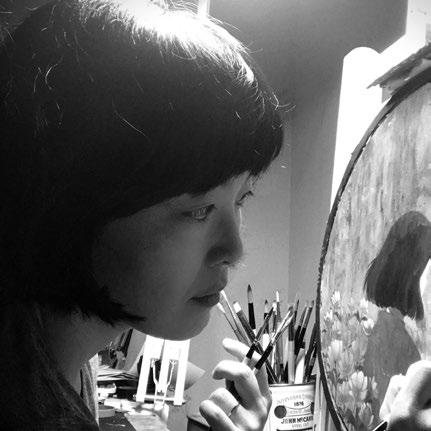

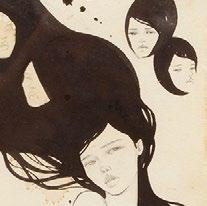
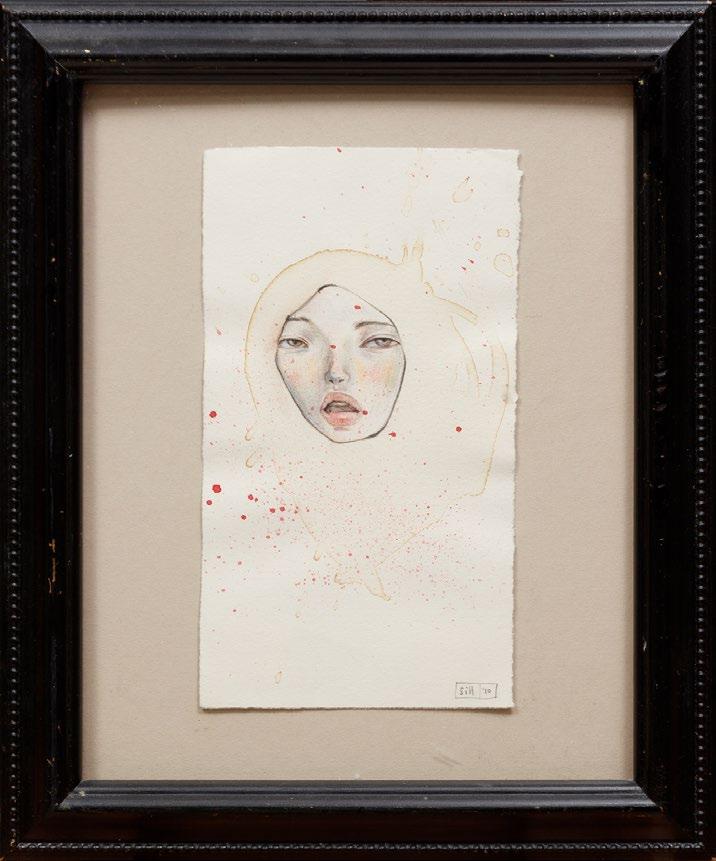
Ref.: “Stella Im Hultberg.” SHOWstudio. www.showstudio.com. Accessed Mar. 6, 2023.
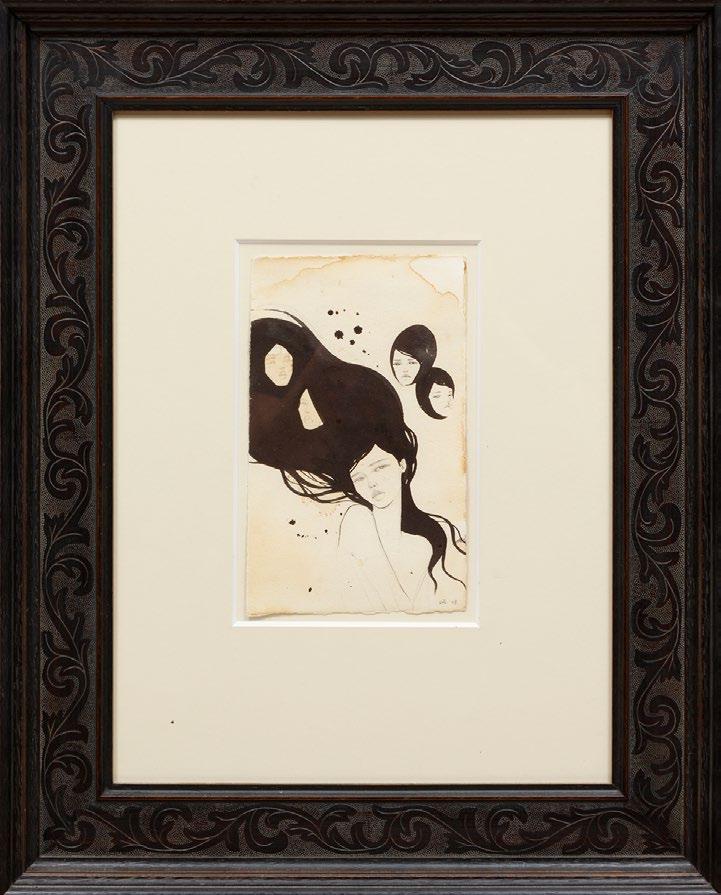
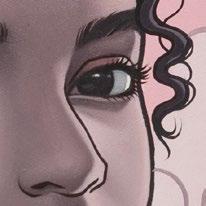
Note: Toronto-based artist Sarah Joncas has turned heads since entering the art scene, with collectors and galleries fascinated by her modern take on portraiture. Joncas spent her childhood in both Hamilton and Niagara Falls, Ontario. Her interest in the visual arts developed at an early age, starting with dedicated drawings of dinosaurs and lizards. As she matured as an artist, her direction changed gradually from the world of animation to the fine art realm. She has been exhibiting her work in galleries since the age of sixteen. Joncas graduated with a Bachelor of Fine Arts from the Ontario College of Art and Design and has become well-known for her beautifully rendered portraits. Her paintings combine realism with a haunting illustrative quality and an incredible smoothness of surface. Her subjects are illuminated seemingly from within and their direct gaze hints at an emotional and symbolic complexity that is as mysterious as it is compelling.

Ref.: Violetta, Jessica. “Artist Interview: Sarah Joncas.” Modern Eden Gallery. www.moderneden.com. Accessed Mar. 4, 2032; “Sarah Joncas.” Thinkspace. www.thinkspaceprojects.com. Accessed Mar. 4, 2023.

79. Adrian Deckbar (American/Louisiana, b. 1950), “Male #1 Head”, pastel on paper mounted to board, signed lower left, titled, artist bio and “Hanson Gallery, New Orleans, LA” label on backing, 5 1/2 in. x 4 1/2 in., framed, overall 11 3/8 in. x 10 1/4 in. x 1 in.

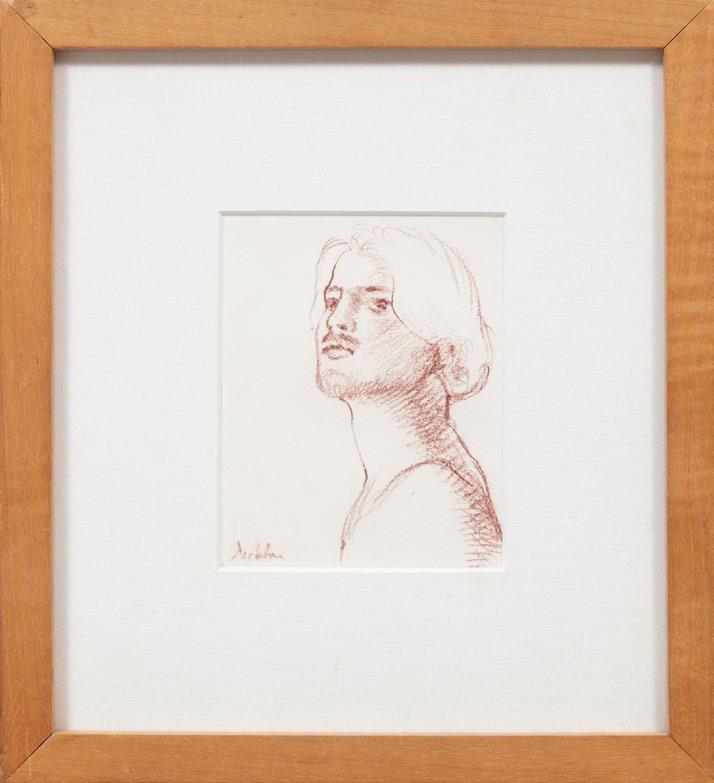
[$400/600]
Note: A native of New Orleans, Adrian Deckbar had a musical and artistic start to life, playing violin at age nine and beginning a lifelong interest in observational drawing while in her teens. She earned a Bachelor of Arts in painting and drawing from the then University of Louisiana and Master of Arts in the same subjects from San Francisco State University. Later, she also undertook a Master of Fine Arts at Tulane University, where she has served on the faculty. Deckbar’s paintings explore the boundaries of photorealism. Using photography as a base for her work, she transforms the medium with paint to become something entirely new. Her sensitive attention to line and color is clear from the smallest drawing to her large-scale pieces. Deckbar has exhibited throughout the United States and received numerous accolades, including grants from The Adolph Gottlieb Foundation, The Pollock-Krasner Foundation, and the Joan Mitchell Foundation. Ref.: “About the Artist.” Adrian Deckbar. www.adriandeckbar.com. Accessed Mar. 3, 2023; “Adrian Deckbar.” Octavia Art Gallery. www.octaviaartgallery.com. Accessed Mar. 3., 2023.
80. Raine Bedsole (American/Louisiana, 20th c.), “Journey”, giclee print on archival paper, pencil-signed, titled and numbered “347/350” lower margin, sheet 15 3/8 in. x 17 in., unframed.
[$100/150]
Note: Born in Mobile, Alabama, Raine Bedsole graduated from Auburn University and the San Francisco Art Institute. She has been active in the New Orleans art community since the early 1990s and works from a French Quarter studio. Bedsole is a prizewinner in the Florence Biennale and the recipient of a Joan Mitchell Foundation public sculpture grant. She spent much of her childhood on a farm, and her early experiences inspired a lifelong interest in nature. Natural forms and surfaces inform much of her work, which often includes nautical imagery. Her art is often described as haunting and serene, with “patinas and textures embodied with meaning.”
Ref.: “Biography.” Raine Bedsole. www.rainebedsole.com. Accessed Mar. 3, 2023; “Raine Bedsole.” Callan Contemporary. www.callancontemporary.com. Accessed Mar. 3, 2023; “Raine Bedsole.” Cumberland Gallery. www.cumberlandgallery.com. Accessed Mar. 3, 2023.
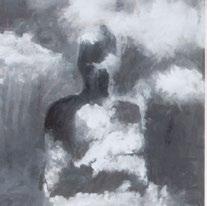

A
Mary Abbott, 54-56
Martha Wright Ambrose, 13
B
Adelle Badeaux, 47
Raine Bedsole, 80
Melissa Bonin, 65, 66
C
Josephine Crawford, 15, 16
Ann Cooper, 40, 41
D
Adrian Deckbar, 79
Caroline Wogan Durieux, 50-53 E
Ethel Edwards, 10
Lim Emery, 63
Gretchen Rotschild Eppling, 42, 43
F
Kate Fullilove, 75 G
Melody Guichet, 74
Louise Guidry, 44
H
Theora Hamblett, 35
Colette Pope Heldner, 17-22
Carrie Hill, 26
Marie Atkinson Hull, 31-34
Stella Im Hultberg, 76, 77
Clementine Hunter, 36
J
Sarah Joncas, 78 K
Alberta Kinsey, 11, 12
Ida Rittenberg Kohlmeyer, 64
T
Nancy Twitchell, 24
Lorin Vieira, 67
Suzanne “Martyl” Schweig
Langsdorf, 48
Emilie de Hoa LeBlanc, 7
Marie de Hoa LeBlanc, 6, 8
Barbara Lion, 49
Ashley Longshore, 69 M
Kayla Mahaffey, 70-73
Geral Knowles Marley, 30
Cora Kelley Ward, 57-61
Ella Wood, 2, 3
Marguerite Stuber Pearson, 1
Helen Pickle, 27-29
Mary Louise Proctor, 37
Ora Moss Reams, 9
Chris Roberts-Antieau, 68
Jane Smith Ninas Evans Sargent, 14
Hattie Saussy, 23
Thelma Lynn Simmons, 38, 39
Alison Stewart, 45, 46
Clara Stroud, 25
Beth Ames Swartz, 62
APRIL 21 & 22 - Premier Collections: Art & Interiors - Live Auction
MAY 25 - UNRESERVED @ Neal - Online Auction
JUNE 15 - Premier Collections: American & English - Live Auction
JUNE 16 - Premier Collections: Global Collecting - Live Auction
JULY 20 - UNRESERVED @ Neal - Online Auction
SEPTEMBER 7 & 8 - Premier Collections: Art & Interiors - Live Auction
OCTOBER 19 - UNRESERVED @ Neal - Online Auction
NOVEMBER 16 & 17 - Louisiana Purchase Auction™ - Live Auction
DECEMBER 7 - Mid-Century, Modern, Contemporary Art & Design - Online Auction
JAN 25 & 26 - Premier Collections: Art & Interiors - Live Auction
* Bold denotes Live Auction. Dates subject to change.
ADMINISTRATION
Director of Administration & Finance
Michelle LeBlanc Leckert, CAI
Client Services / Accounts Receivables
Rebekah Abernathy
Database Management / Internet Auction Administrator
Lisa Weisdorffer
Bookkeeper
Katie Lasher
Marketing & Social Media
Cameron McHarg
General Manager
Jason Leckert
Administrative Assistant
Claire Whitmore
GRAPHICS
Graphics Director / Catalog Design
David Roberts
Photography
Jason Leckert
Gerard Lewis
Jorge Diaz
OPERATIONS
Operations Staff
Charlie Clay
Jerry Major
Graphics Staff
Stephanie Do Ouro
Sarah Rose Janko
Amanda Torres
CONSIGNMENTS
Furniture & Decorative Arts
Polly Rolman-Smith
Paintings, Prints & Photography
Marney Robinson; Sophie Hirabayashi; Beth Sherwood; Casey Foote; Renee Longon
Books, Maps & Natural History Prints
Marc Fagan
Silver & Decorative Arts
Katherine Hovas
General Consignments
Cameron McHarg
Consignments Administrator
Heather Munch
Fine Art Inventory Manager
Casey Foote
AUCTION SERVICES
Trust & Estates Advisor
Henry G. McCall
Appraisals
Marc Fagan, Cameron McHarg
CATALOGUE CONSULTANTS
Asian Arts & Special Projects
Bettine Field Carroll
Newcomb Pottery & Decorative Arts
Scott Gann
Adam Trepagnier
Decorative Arts Inventory Management
Charlie Clay
AUCTIONEERS
Michelle LeBlanc Leckert #1514
Bettine Field Carroll #1874
Marc Fagan #1935
Marney Robinson #2155
JEWELRY
Sally Main
Silver
Carey Mackie
Decorative Arts & Victoriana
Ann M. Masson
GIA Graduate Gemologists
Stephen A. Moses
Ilana Picard
